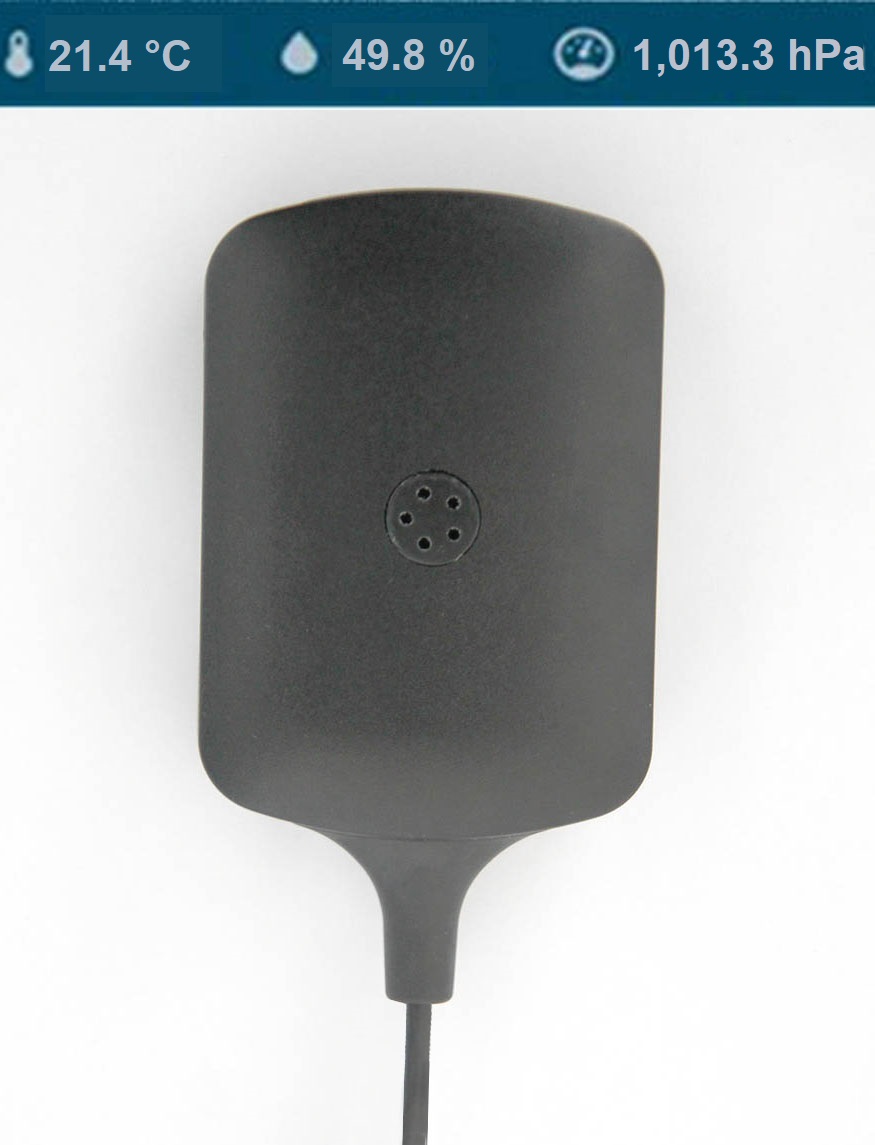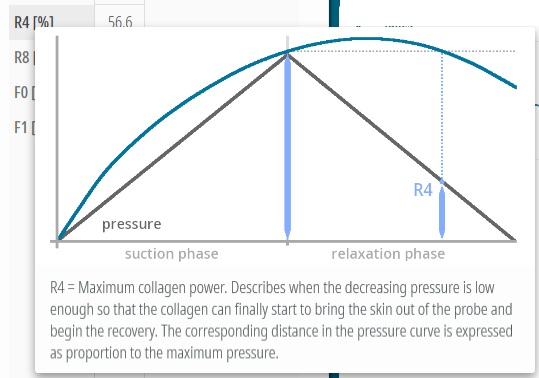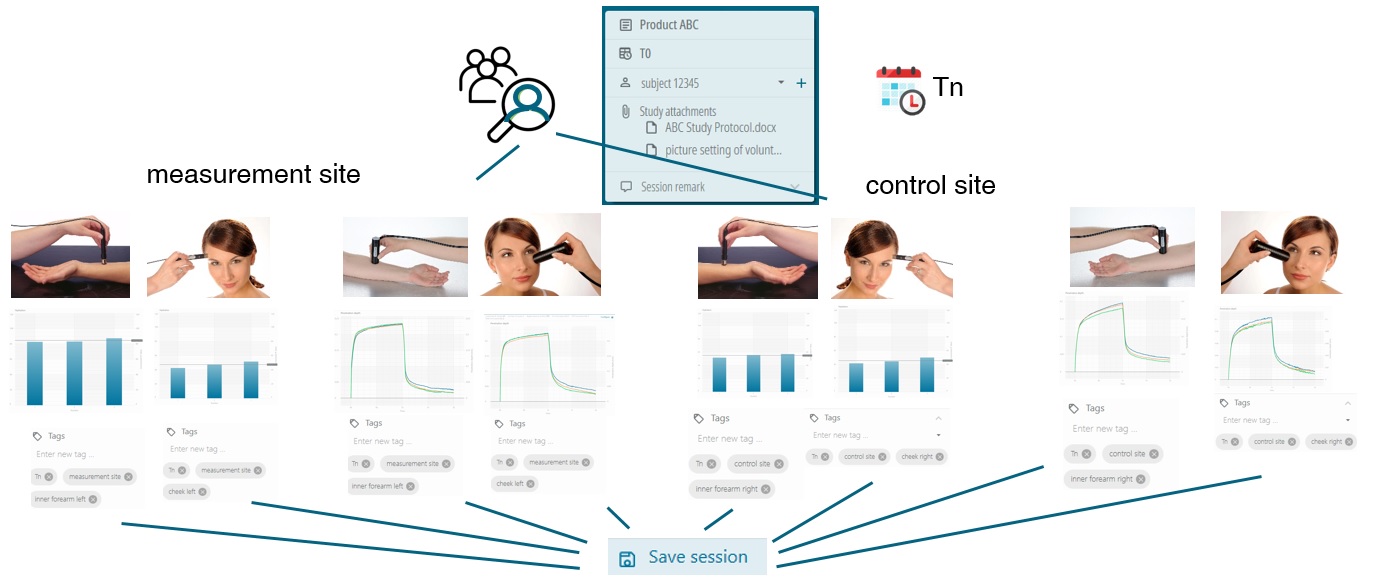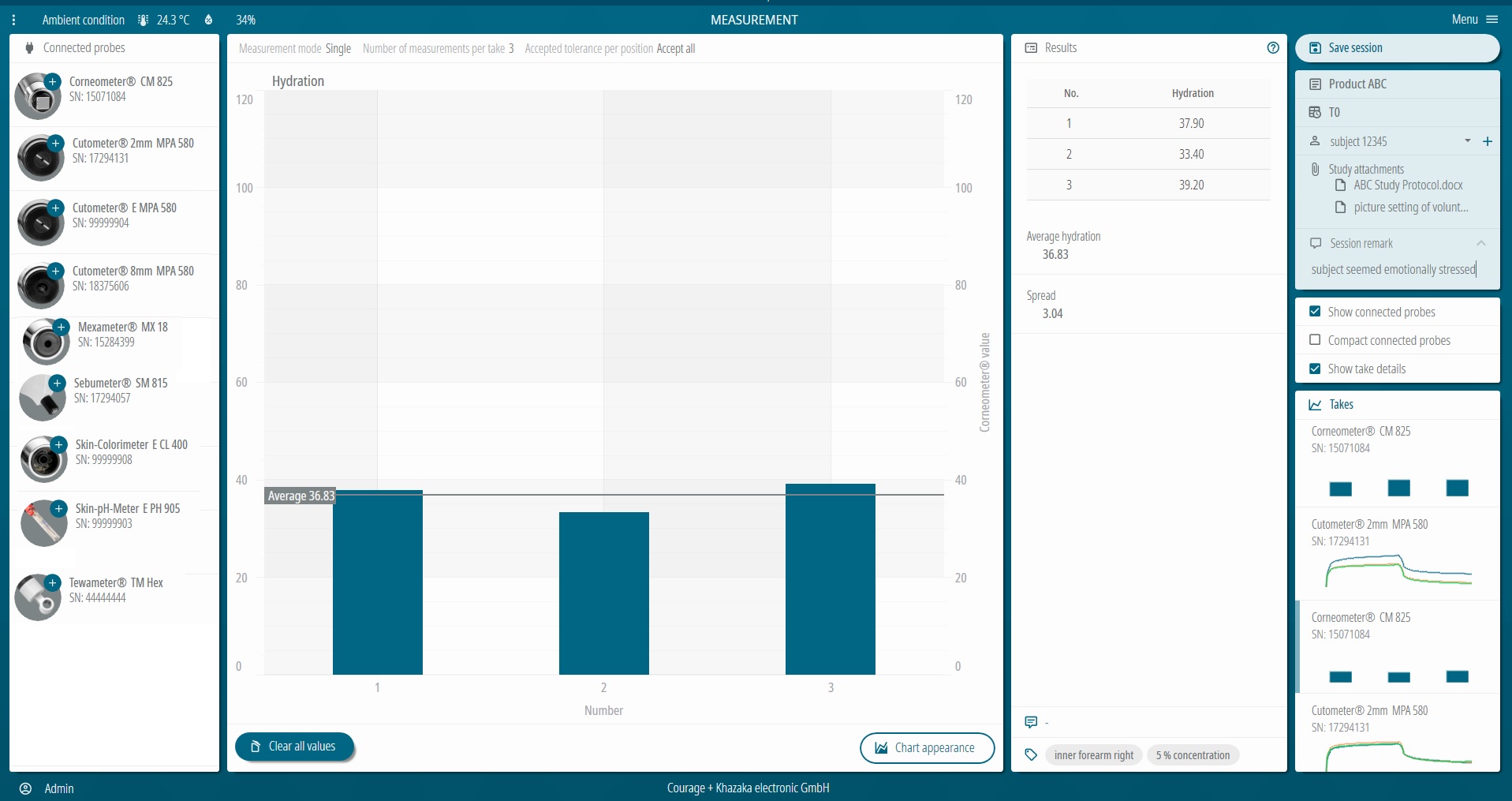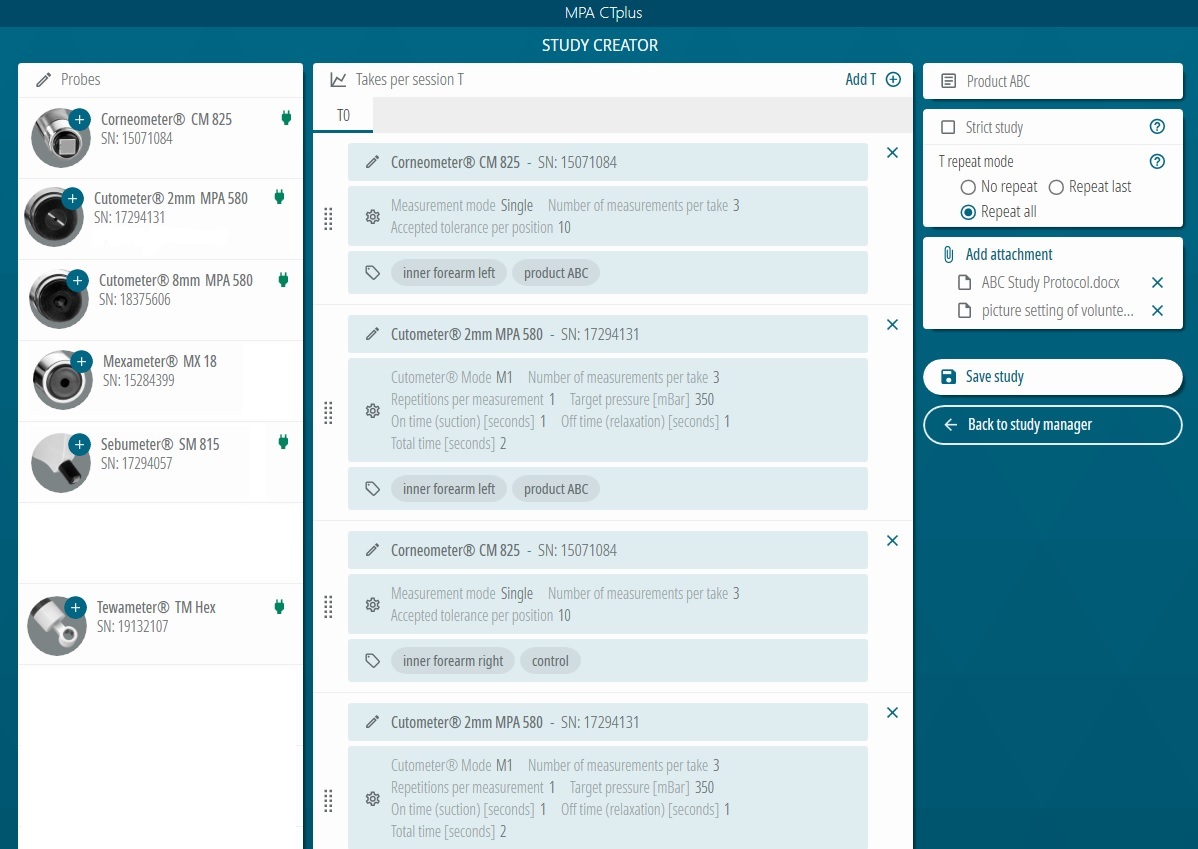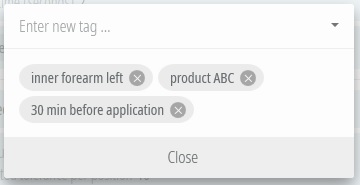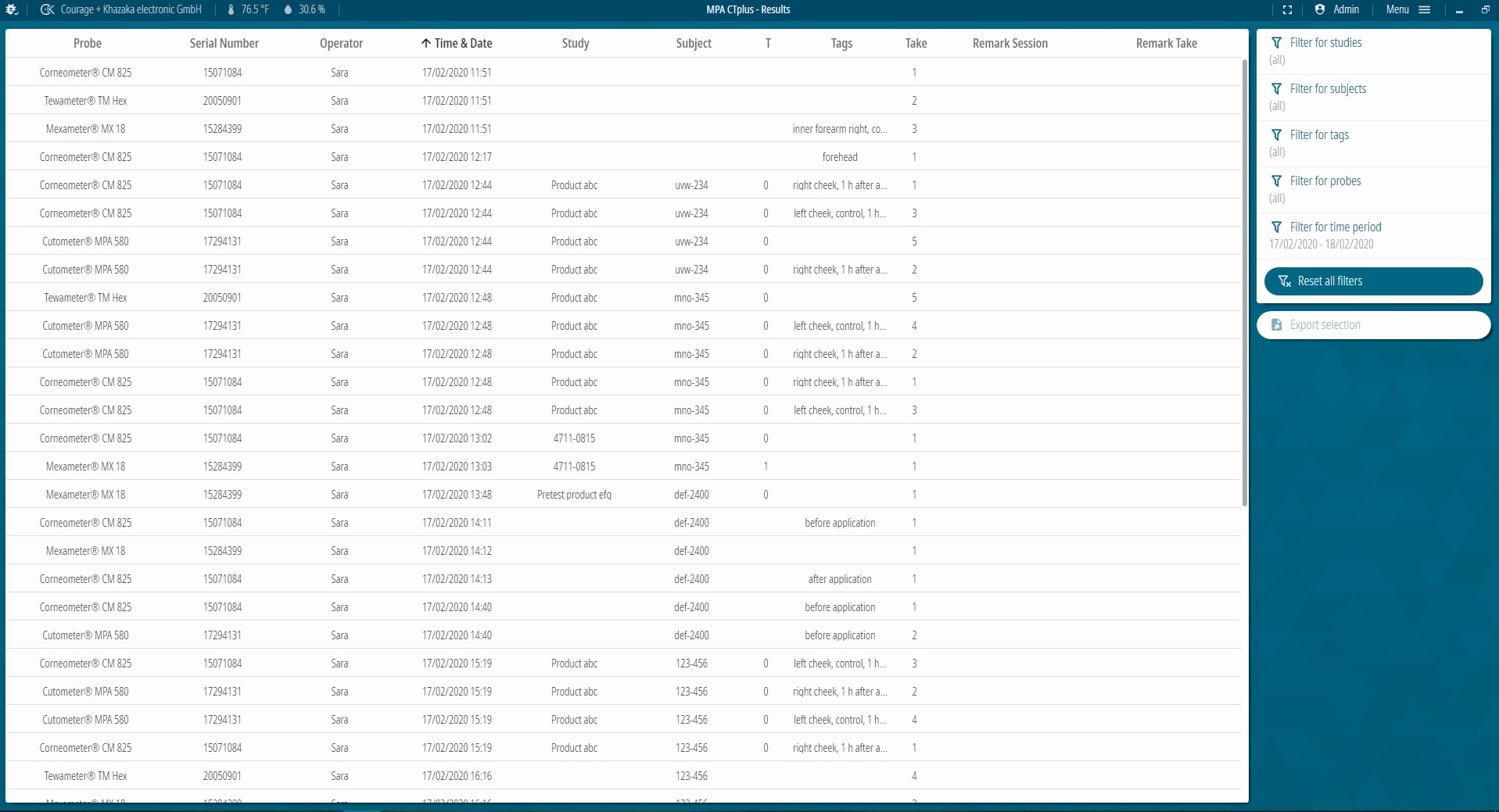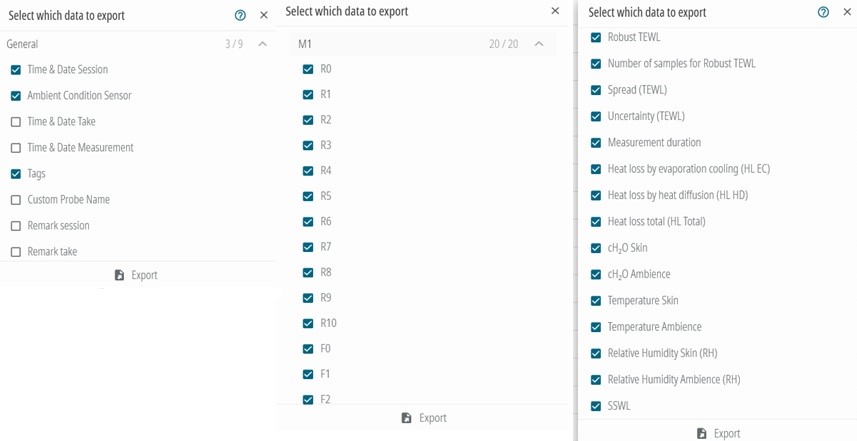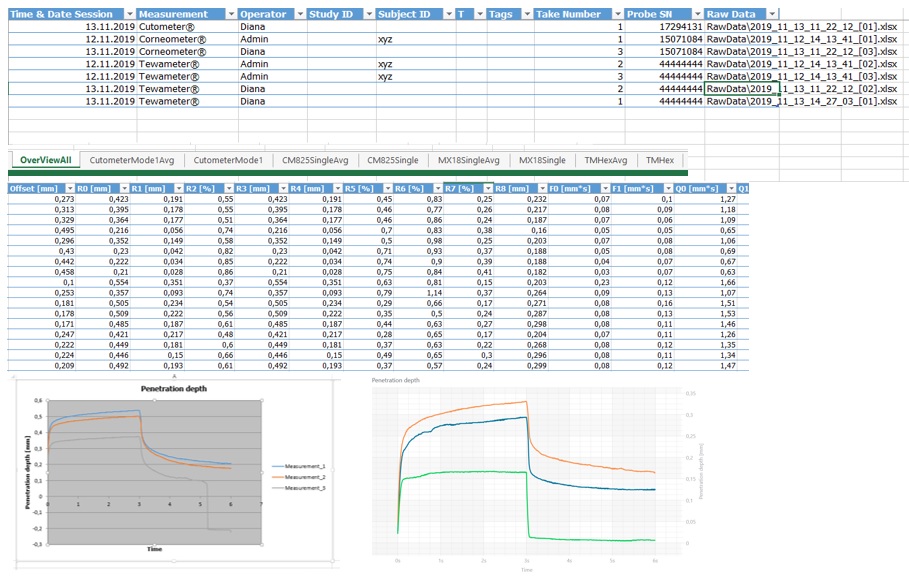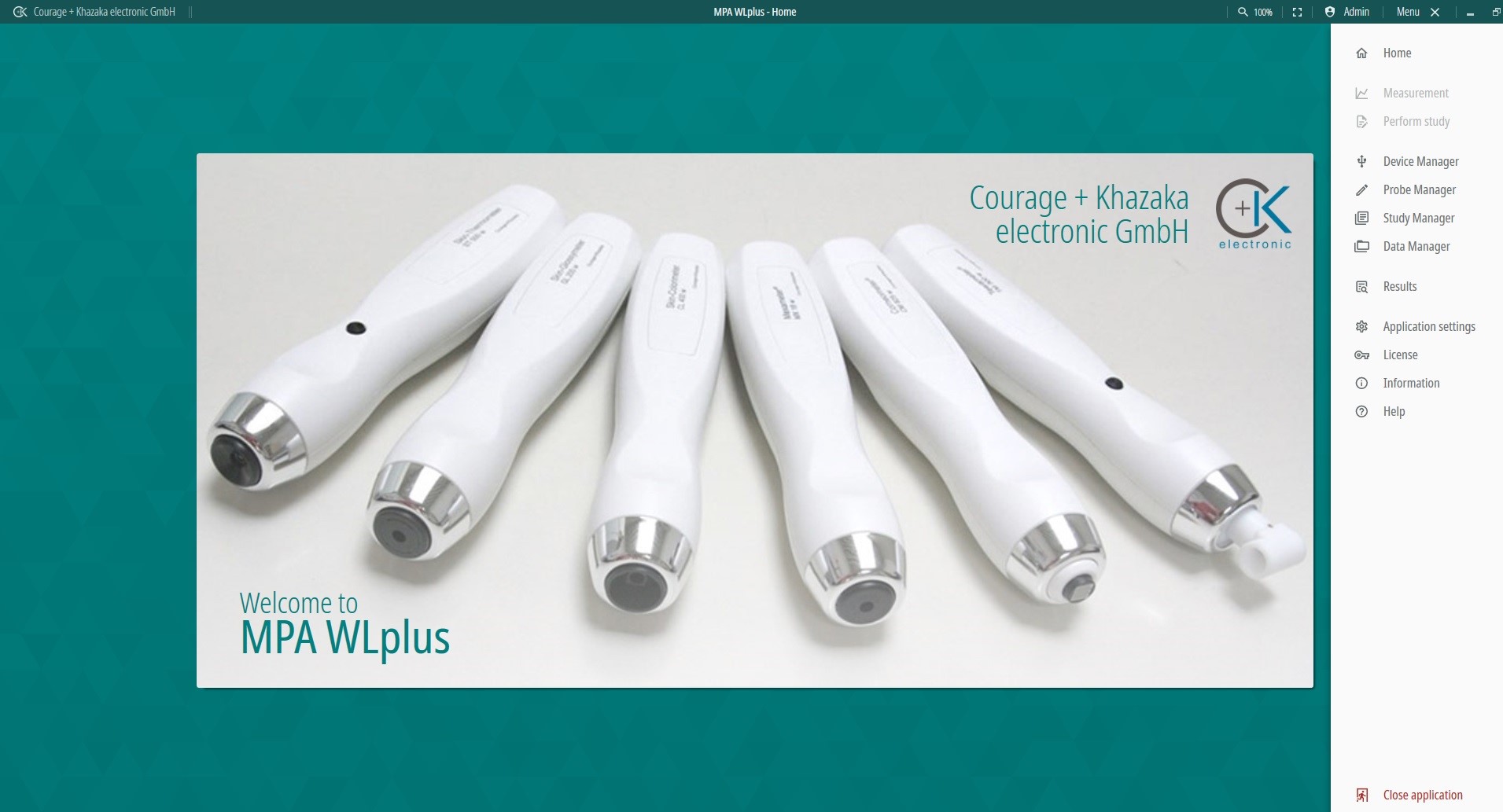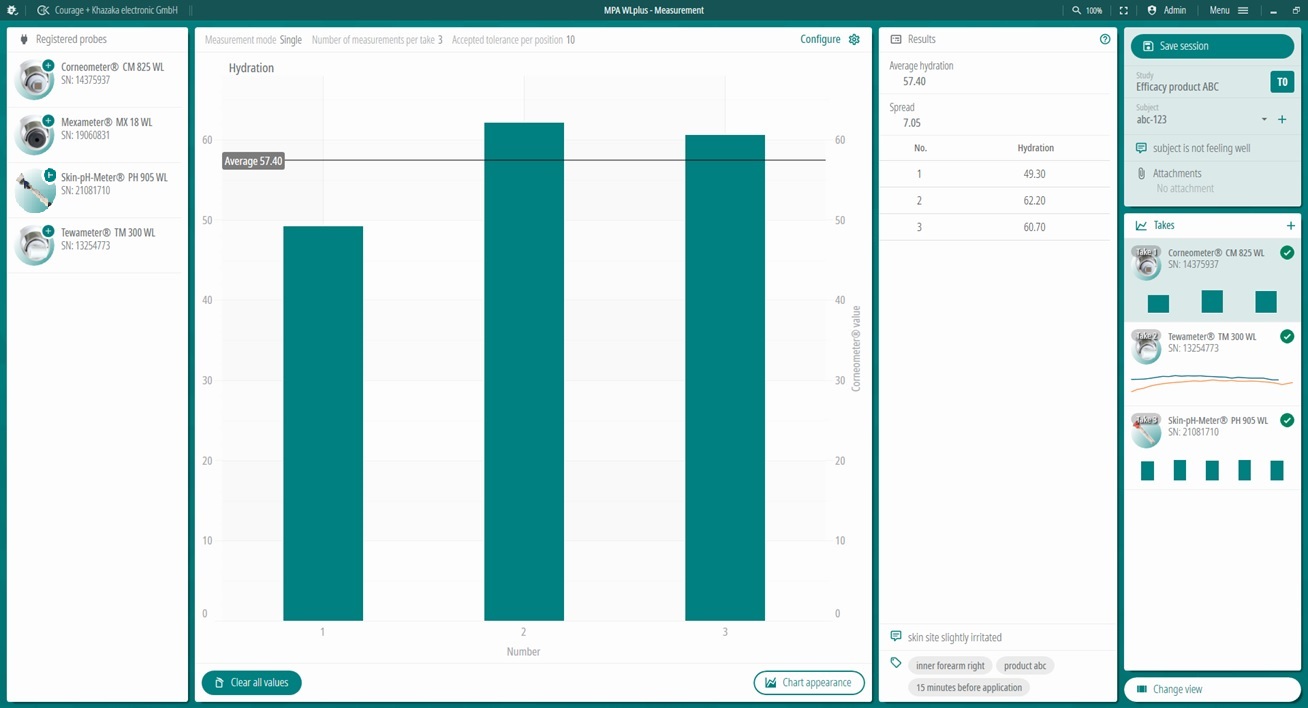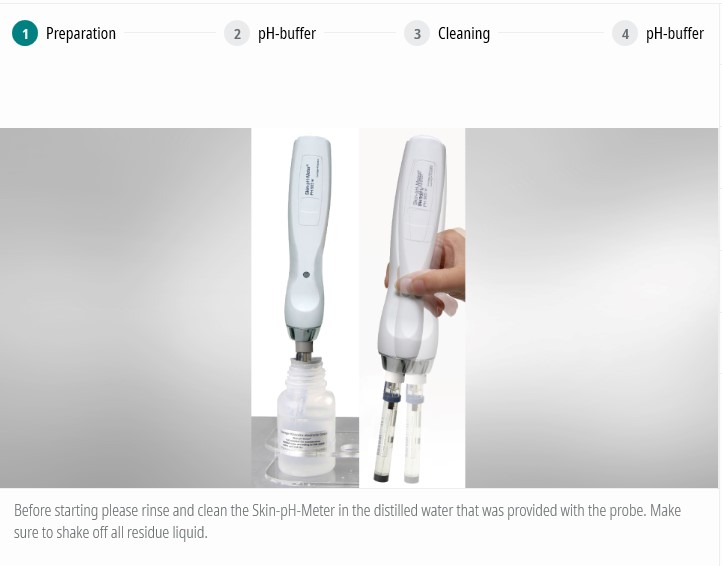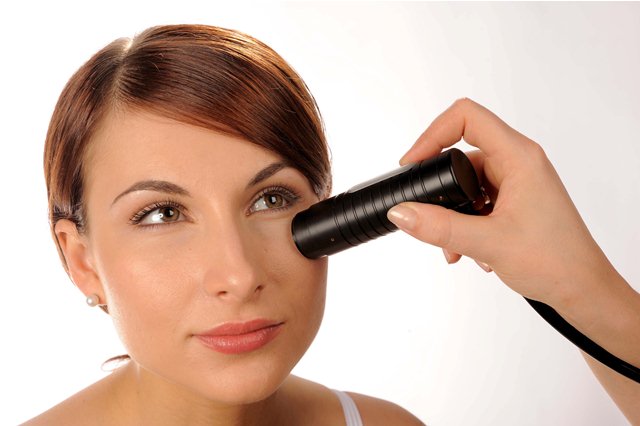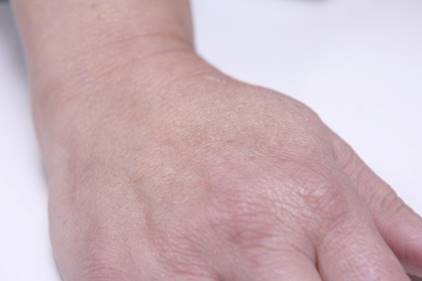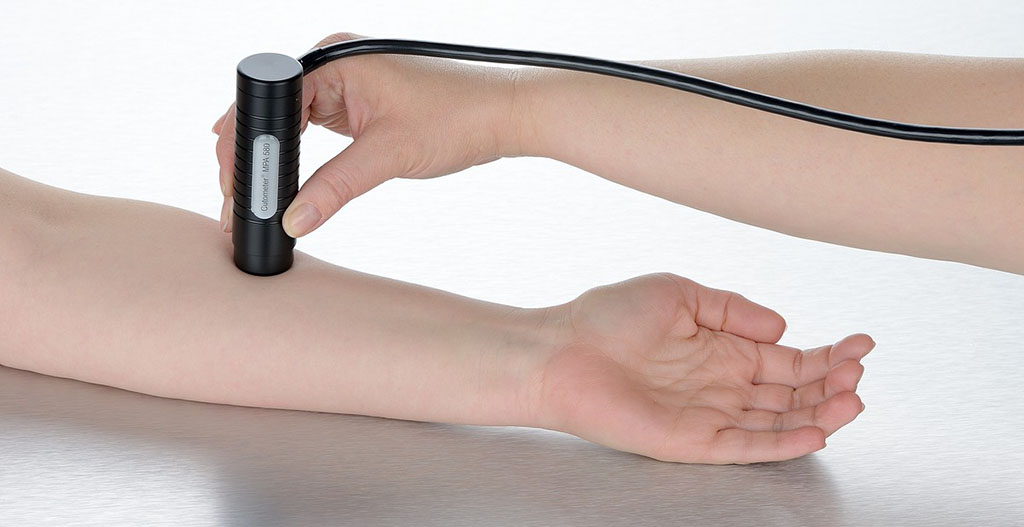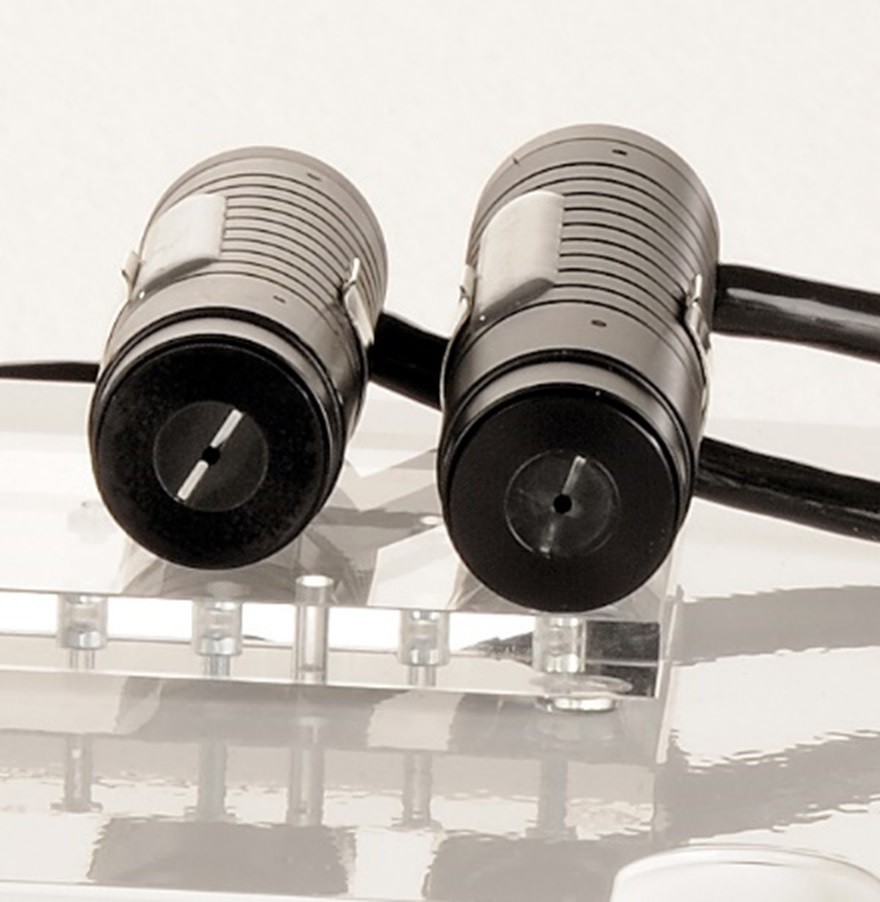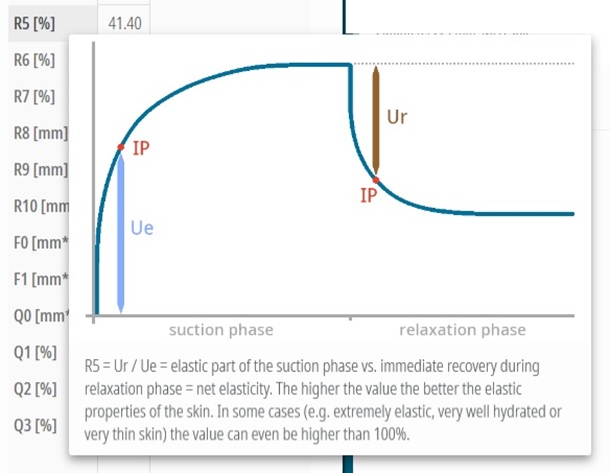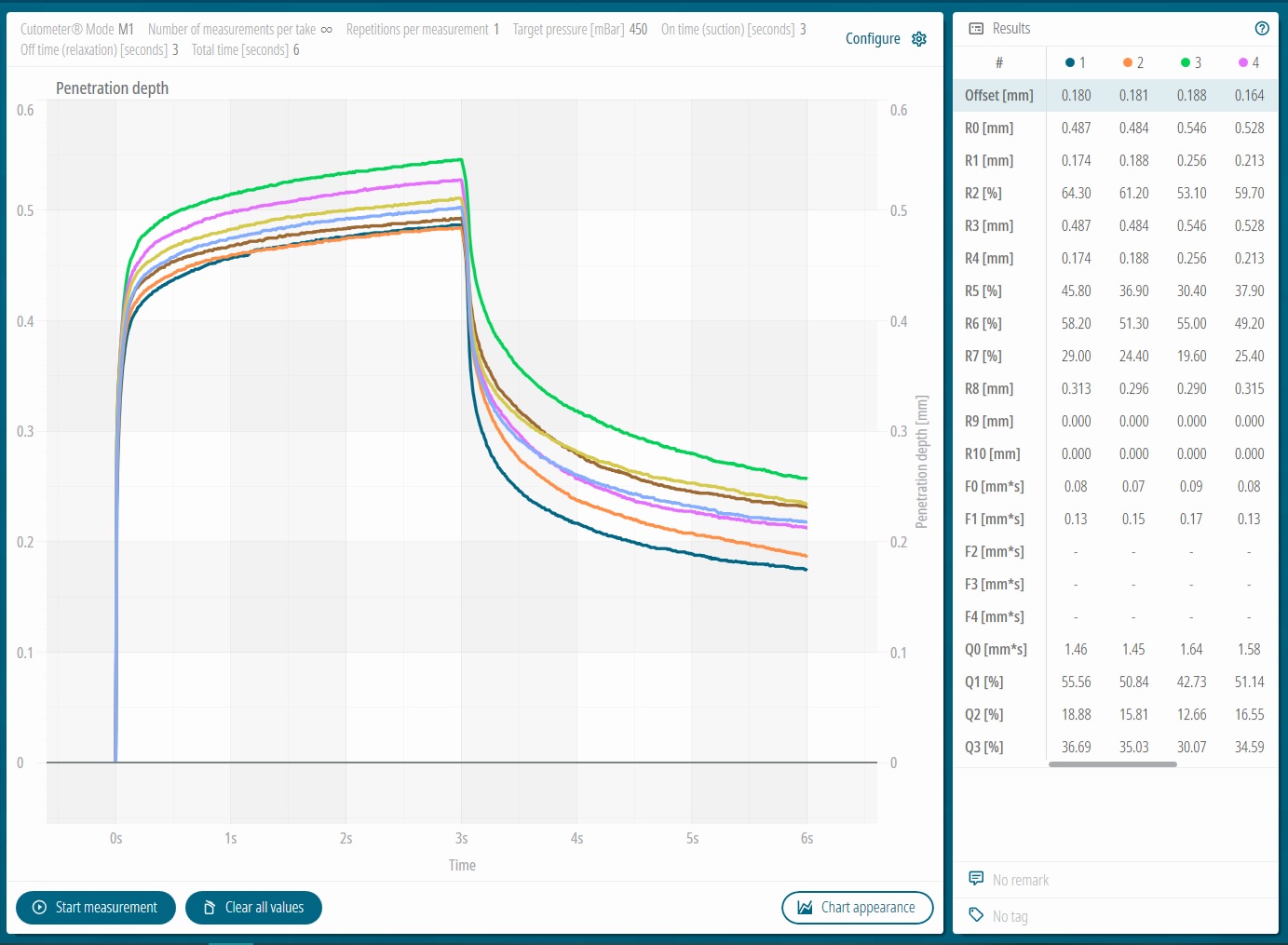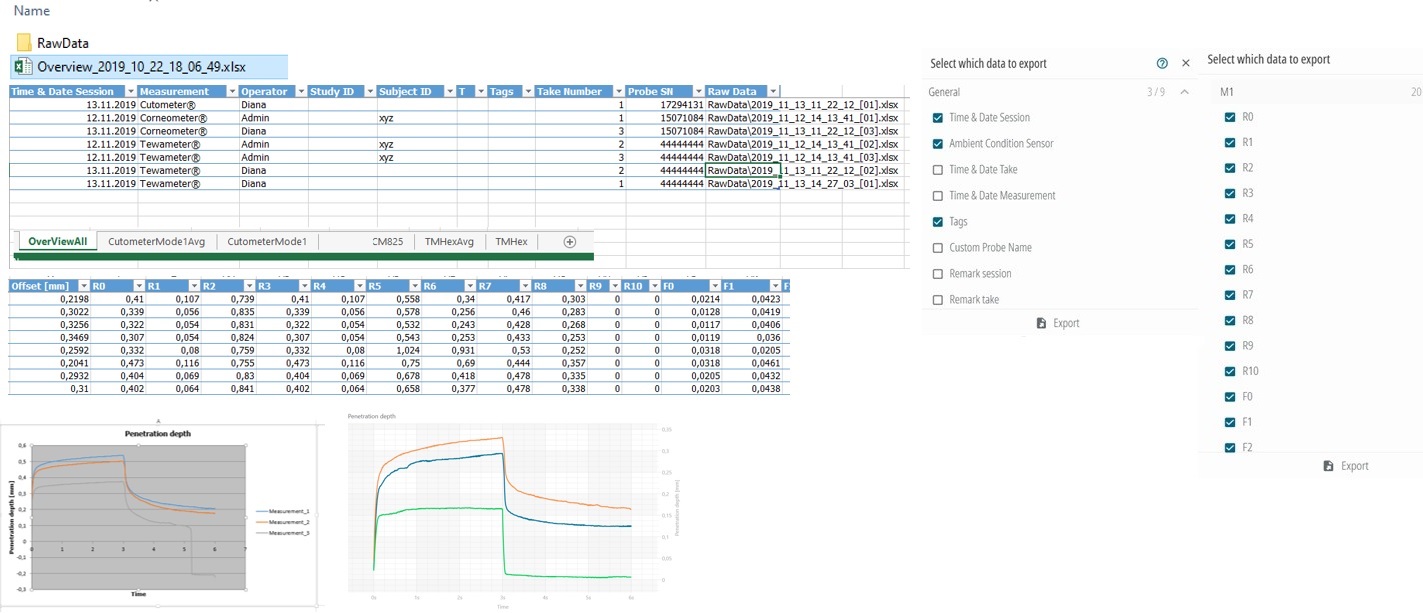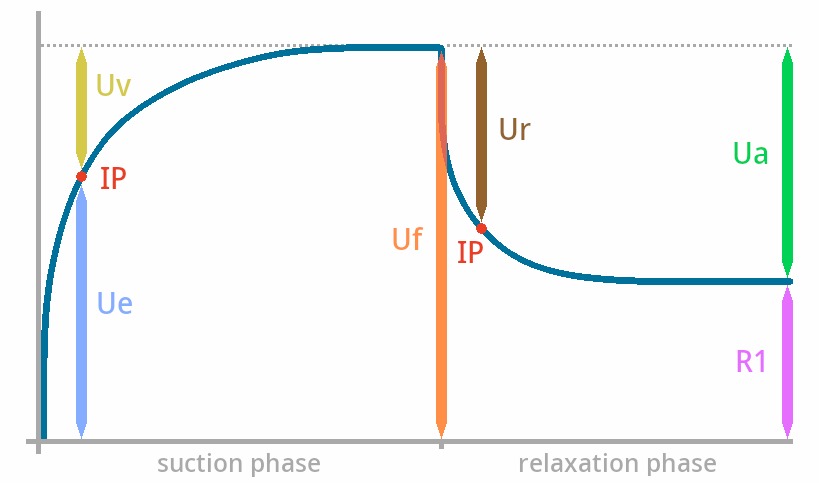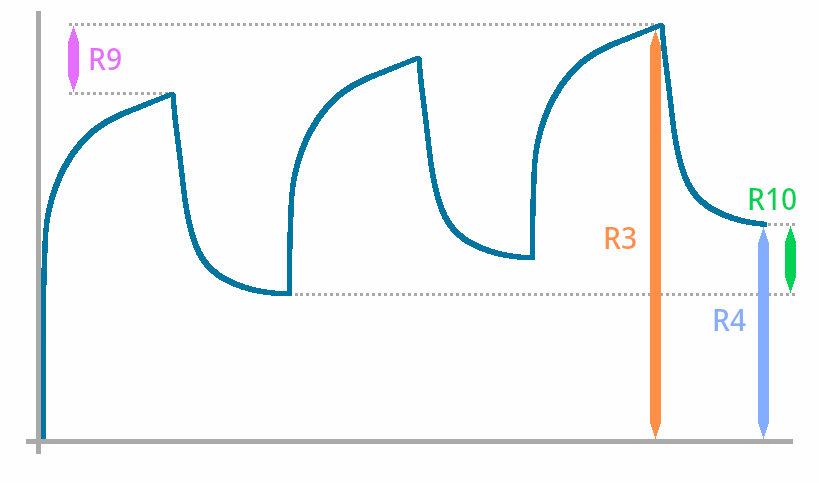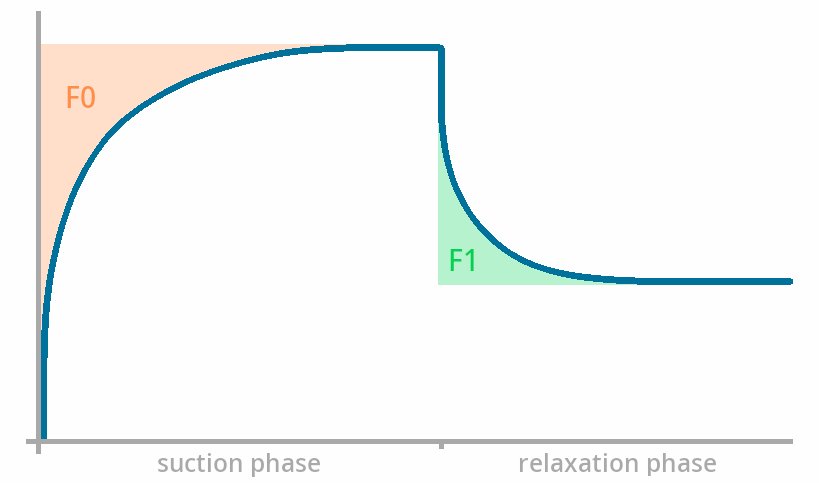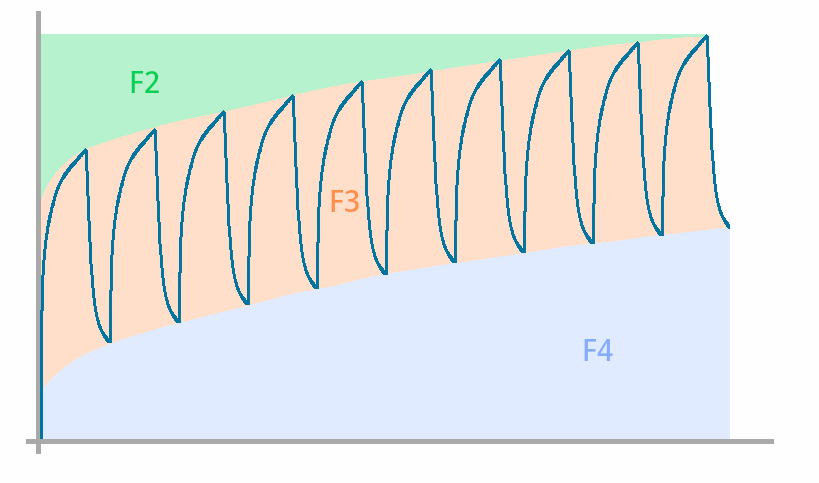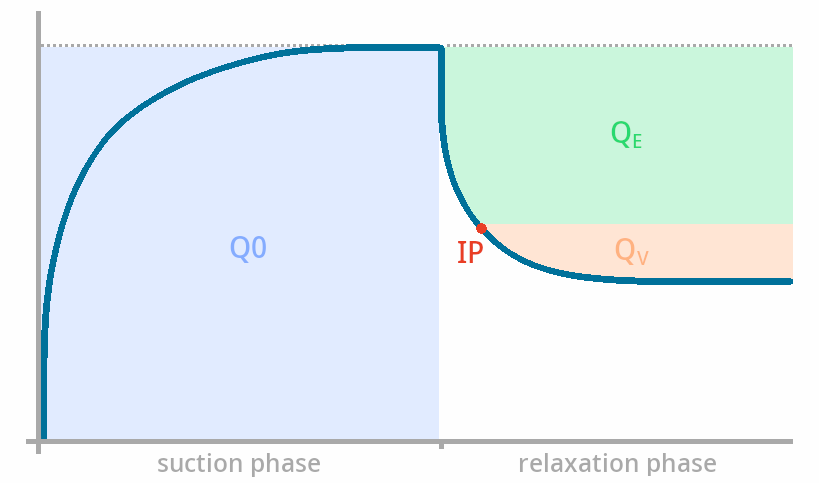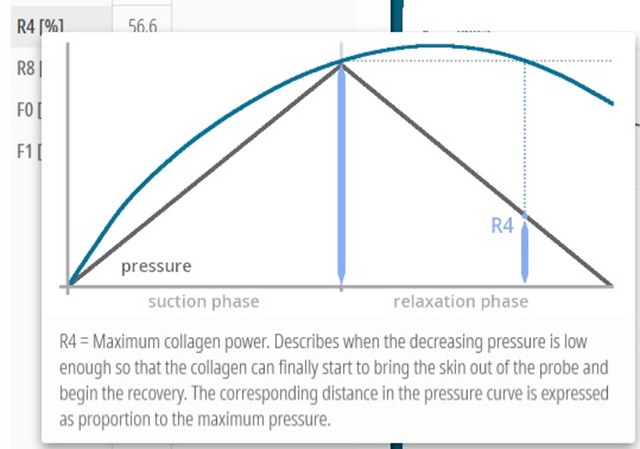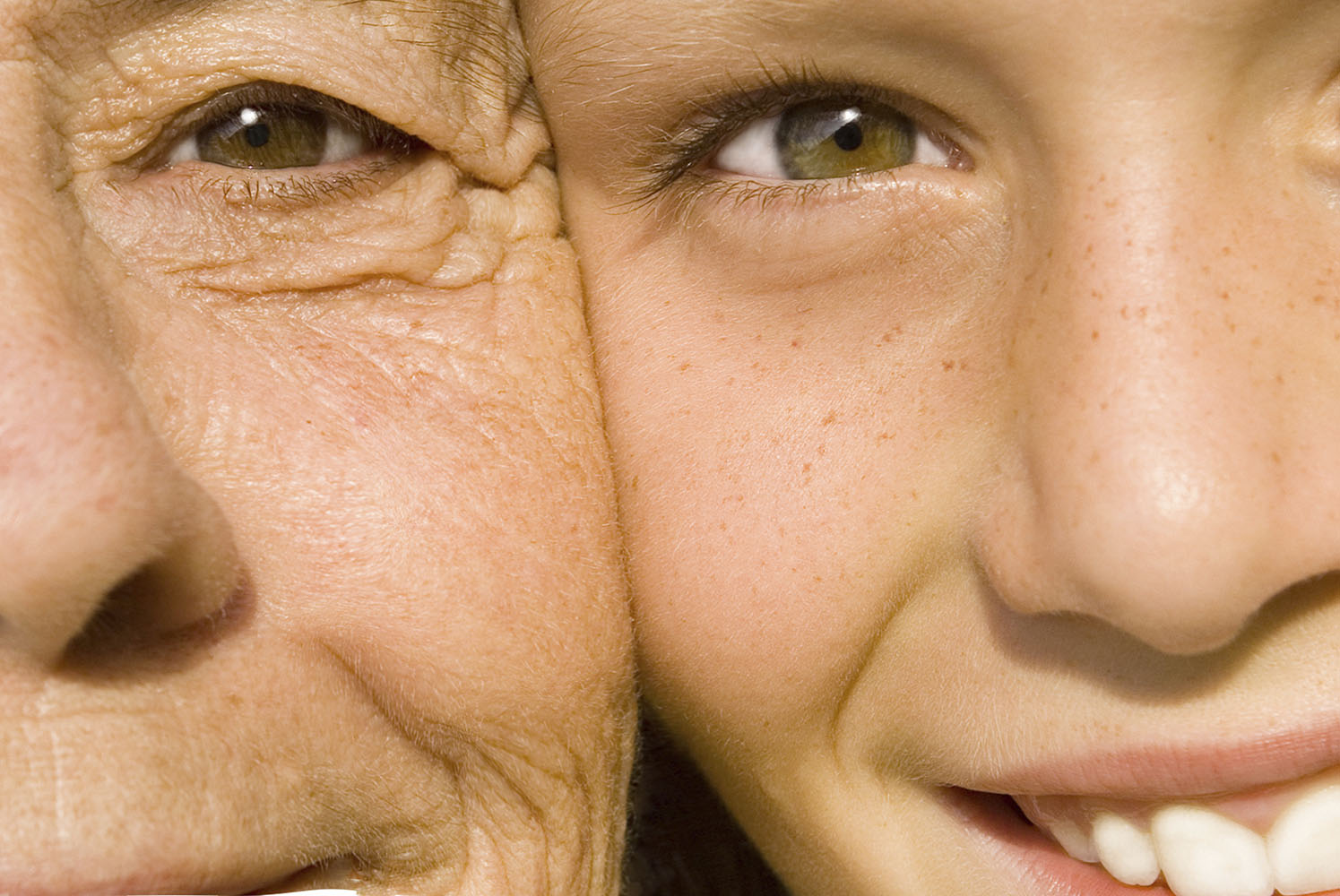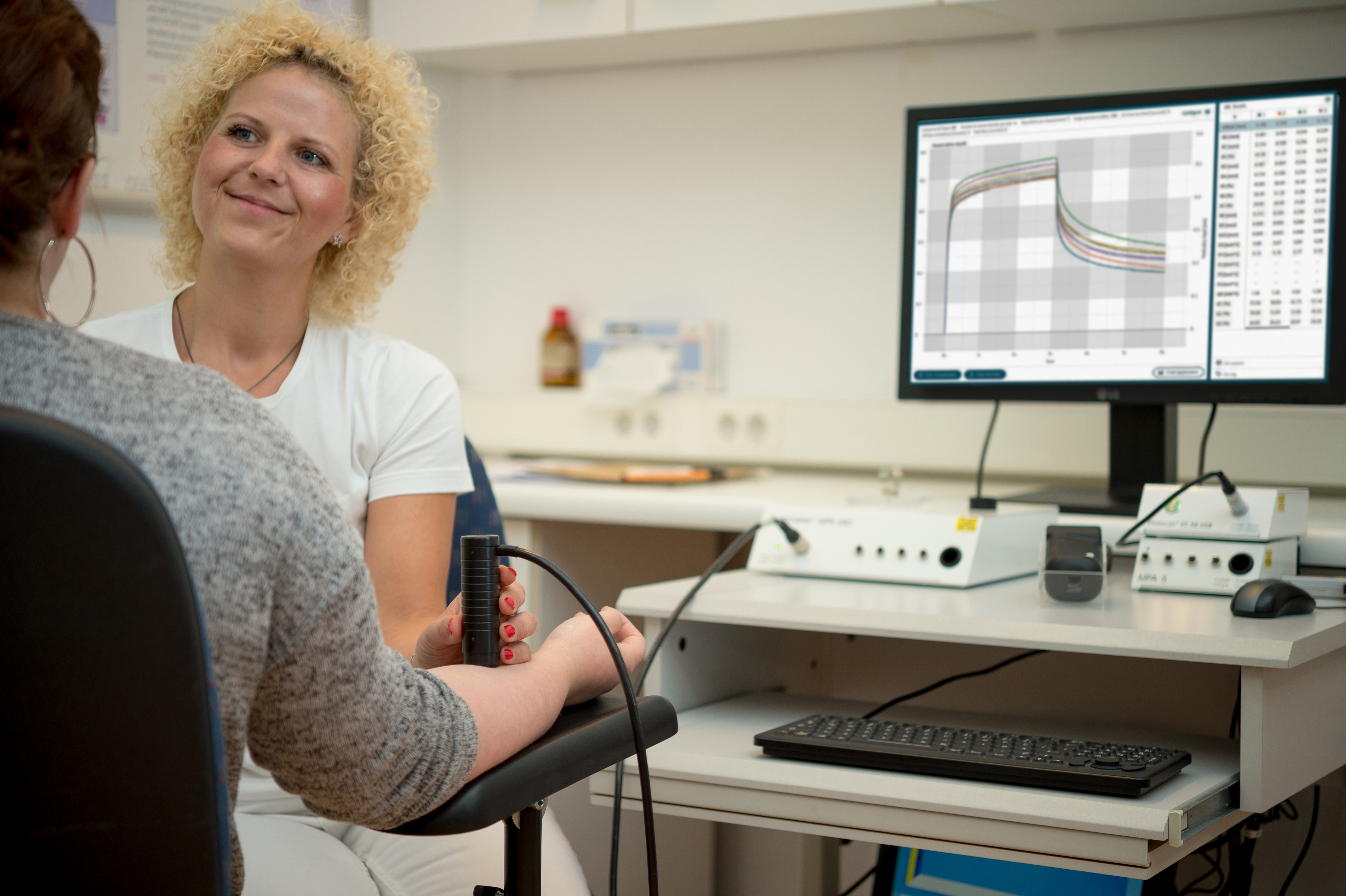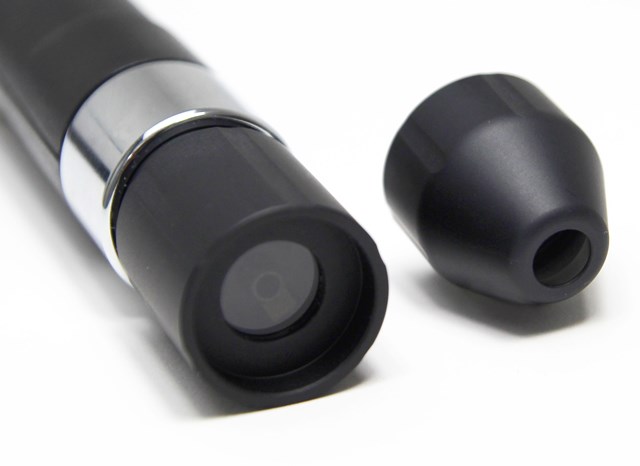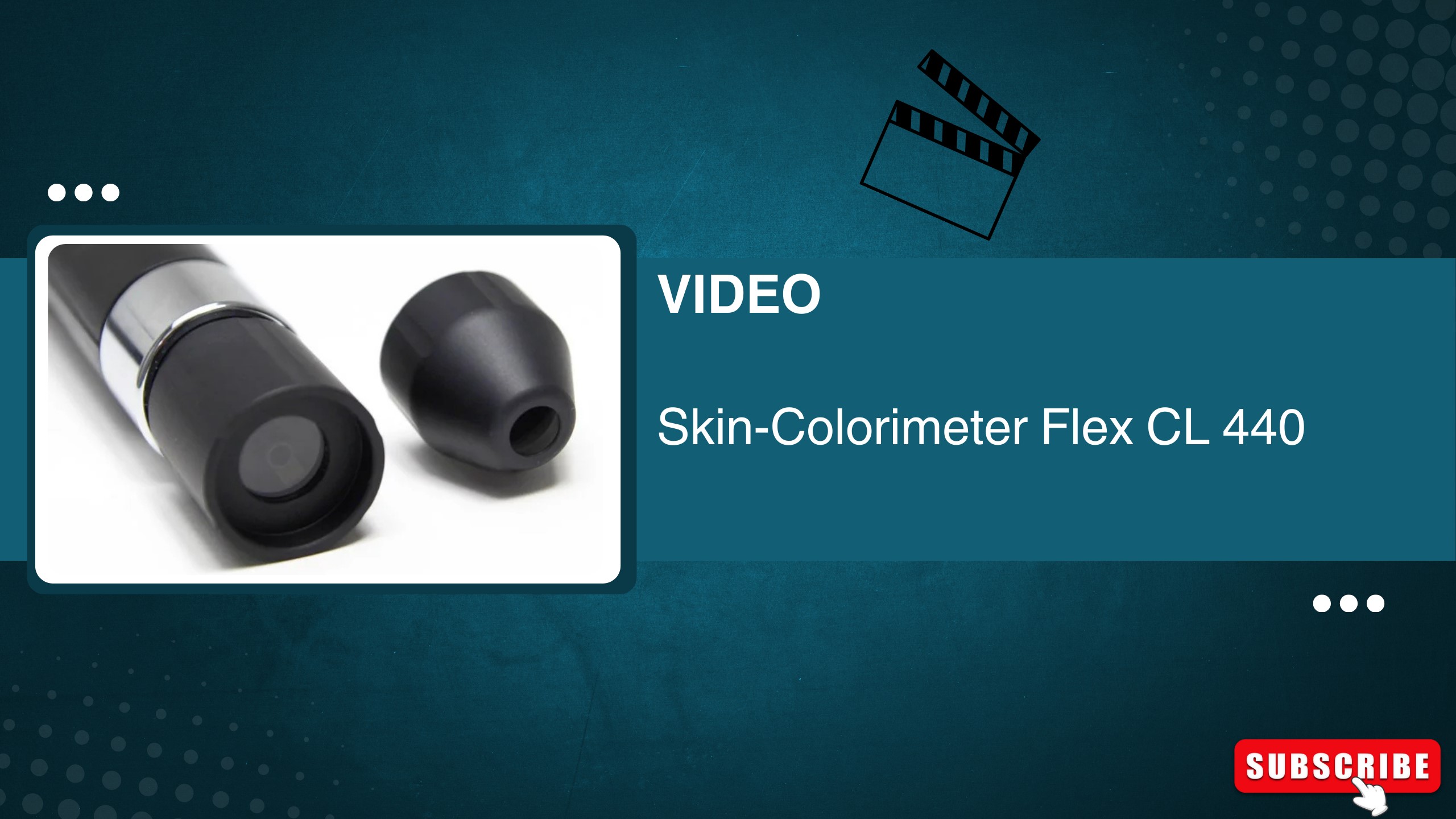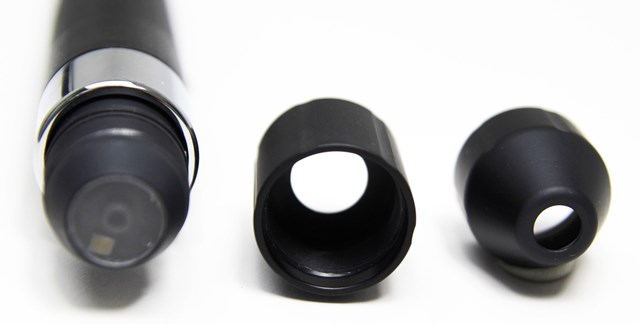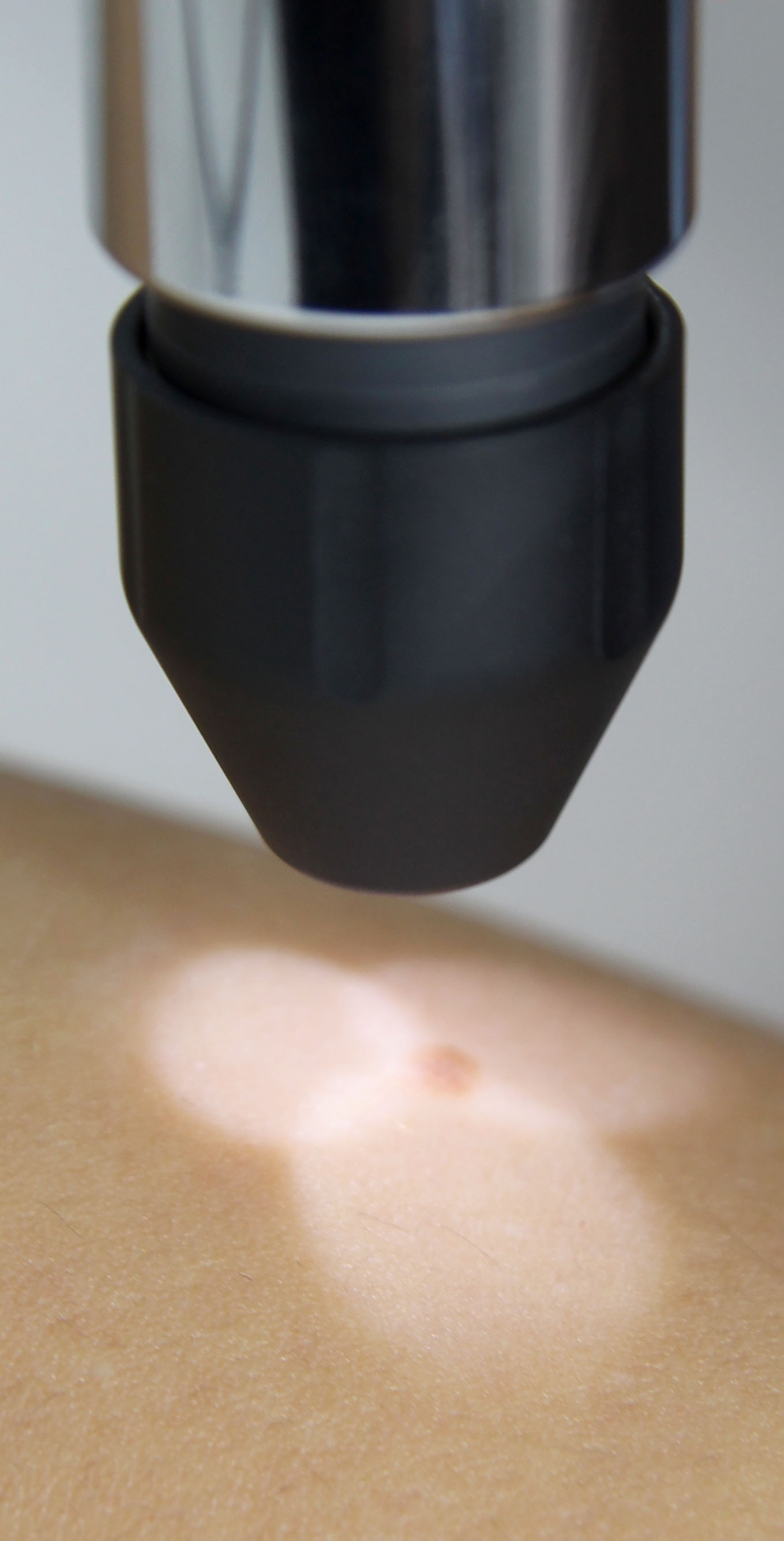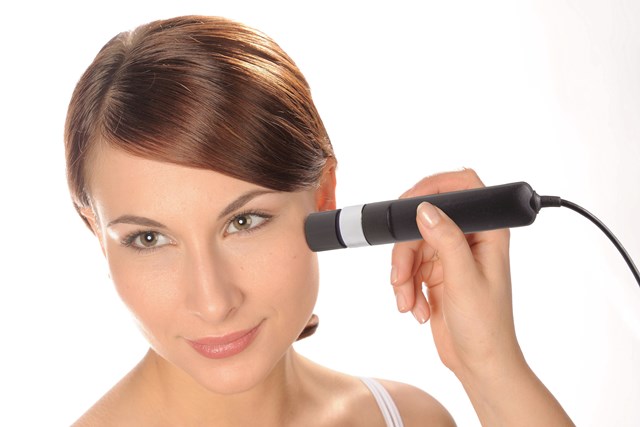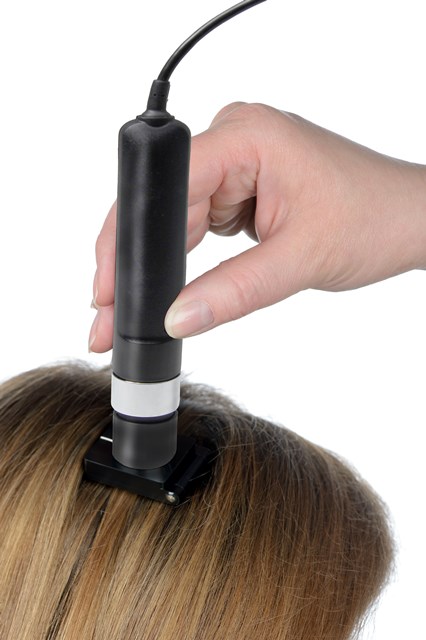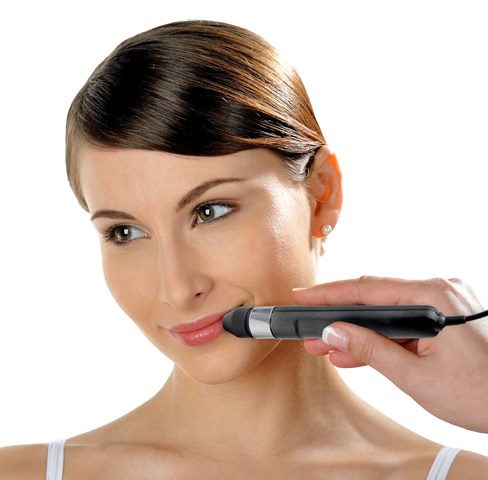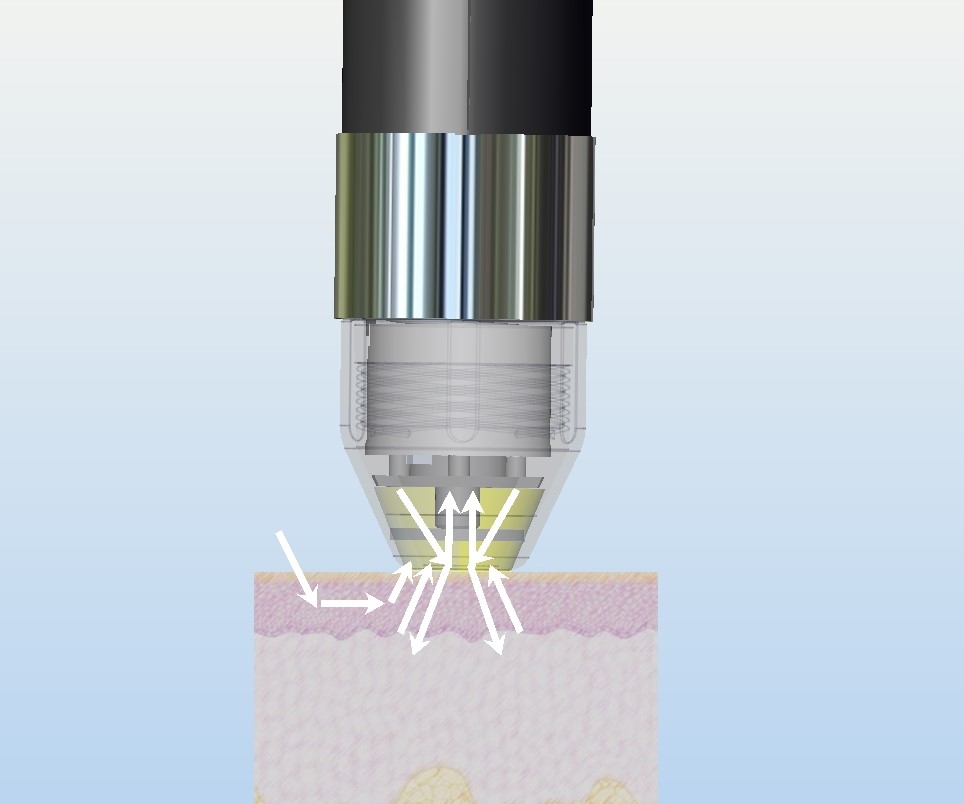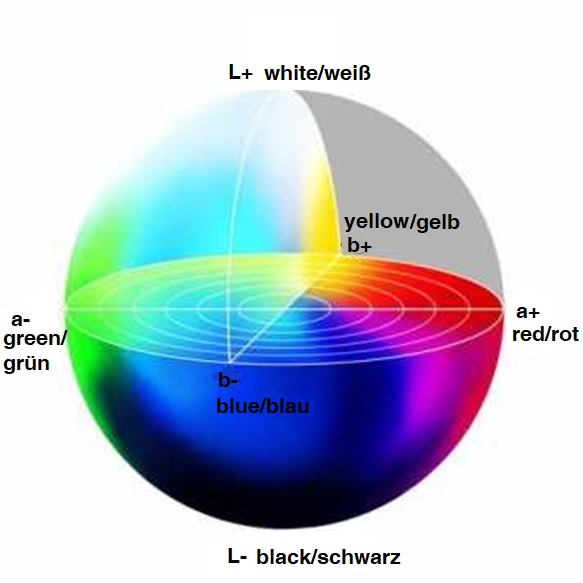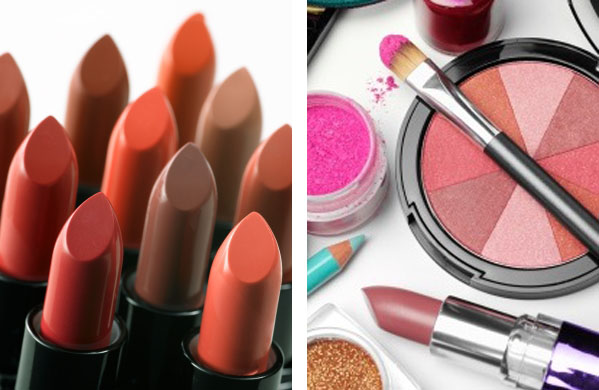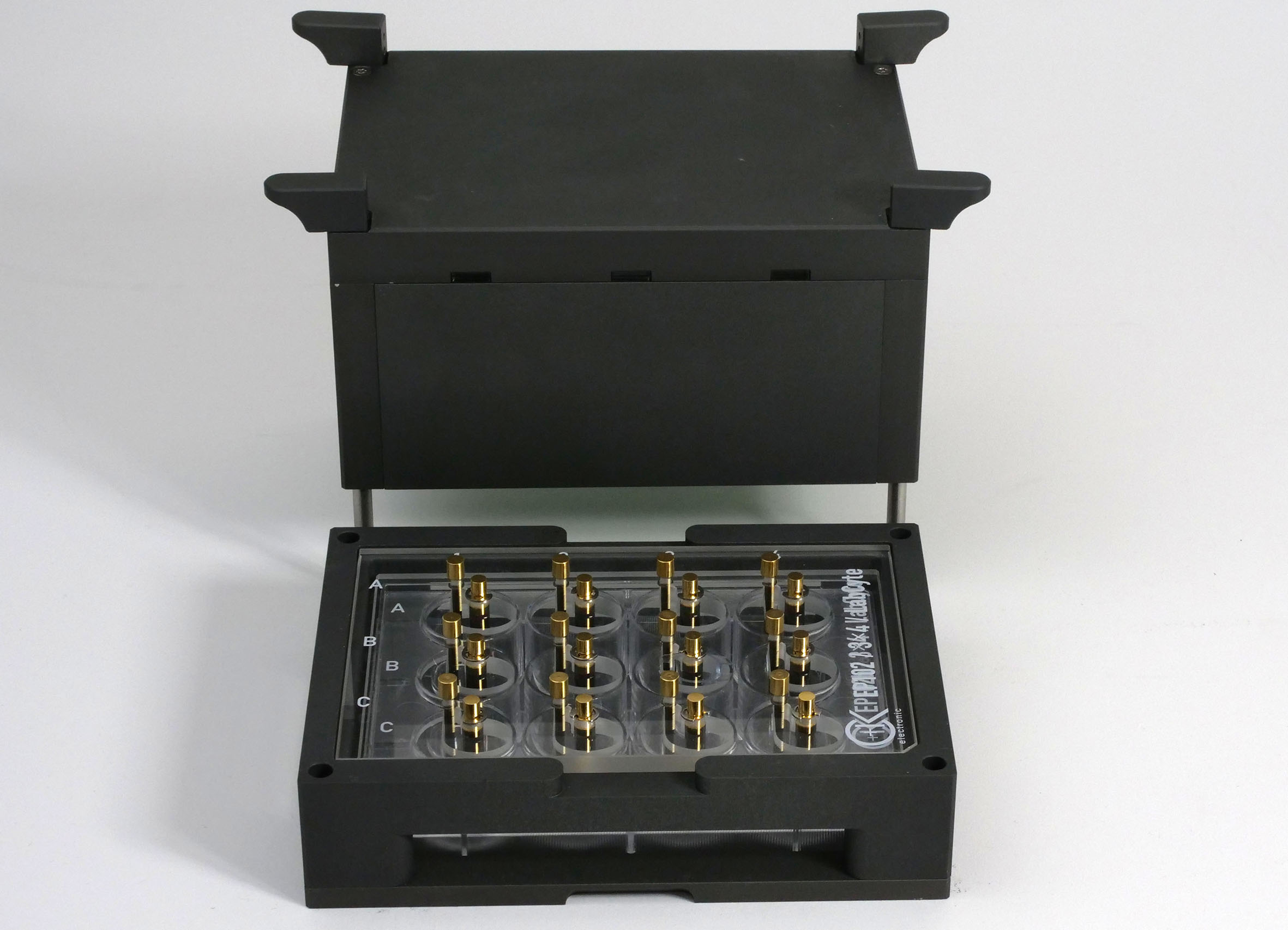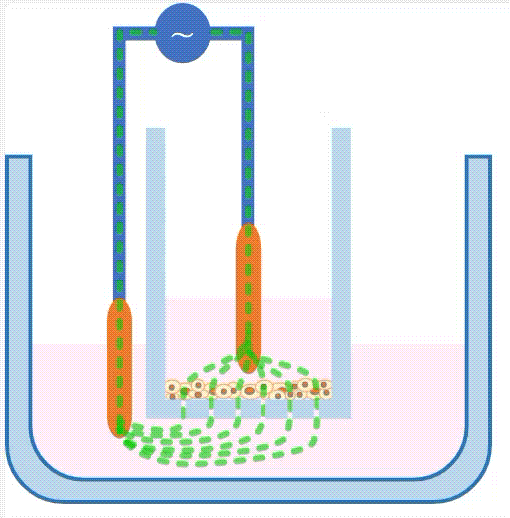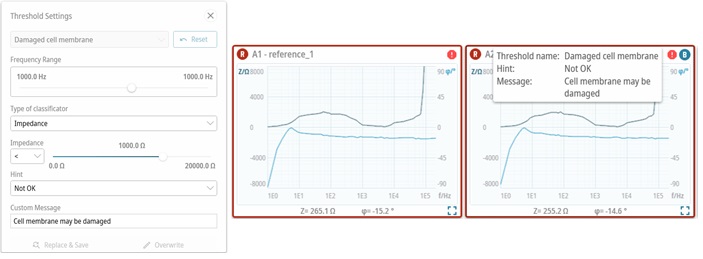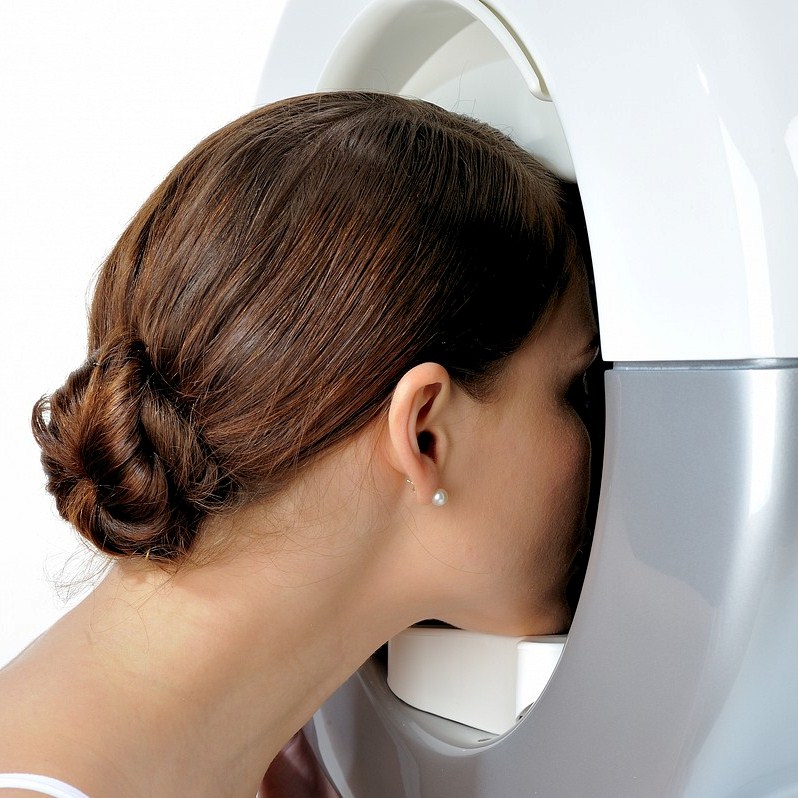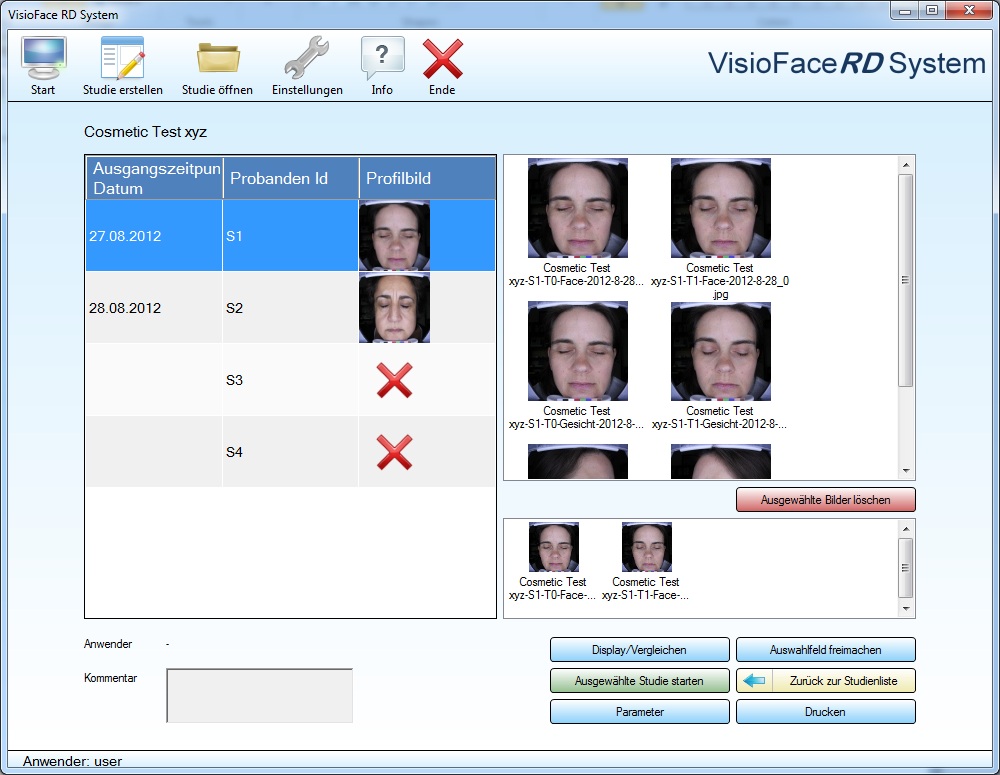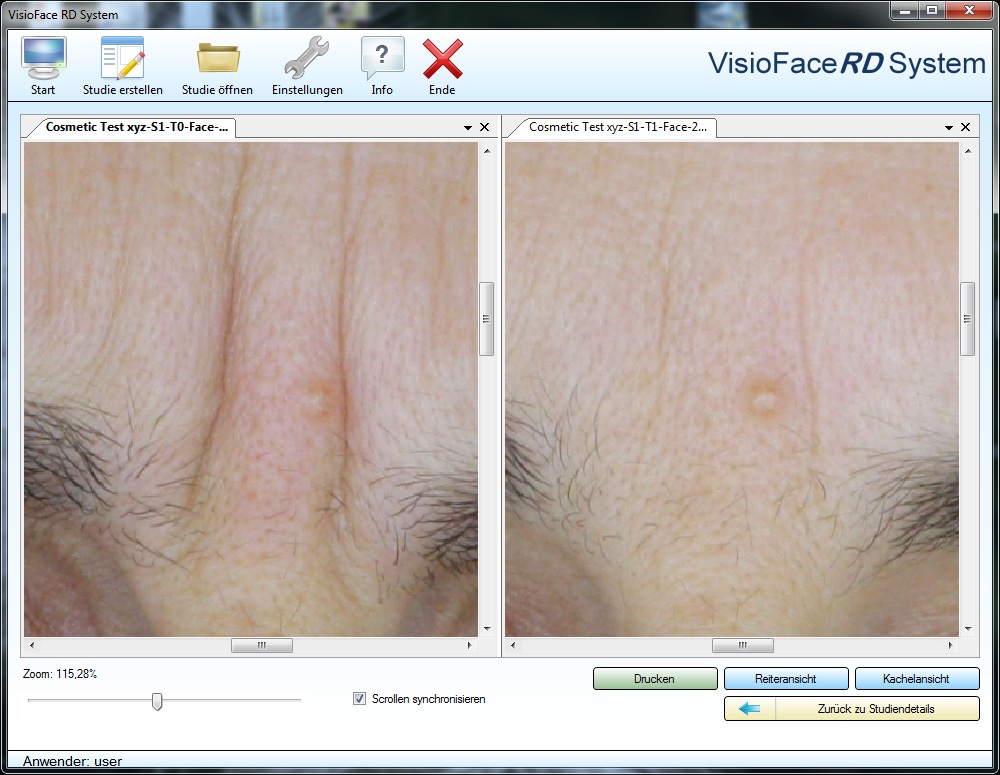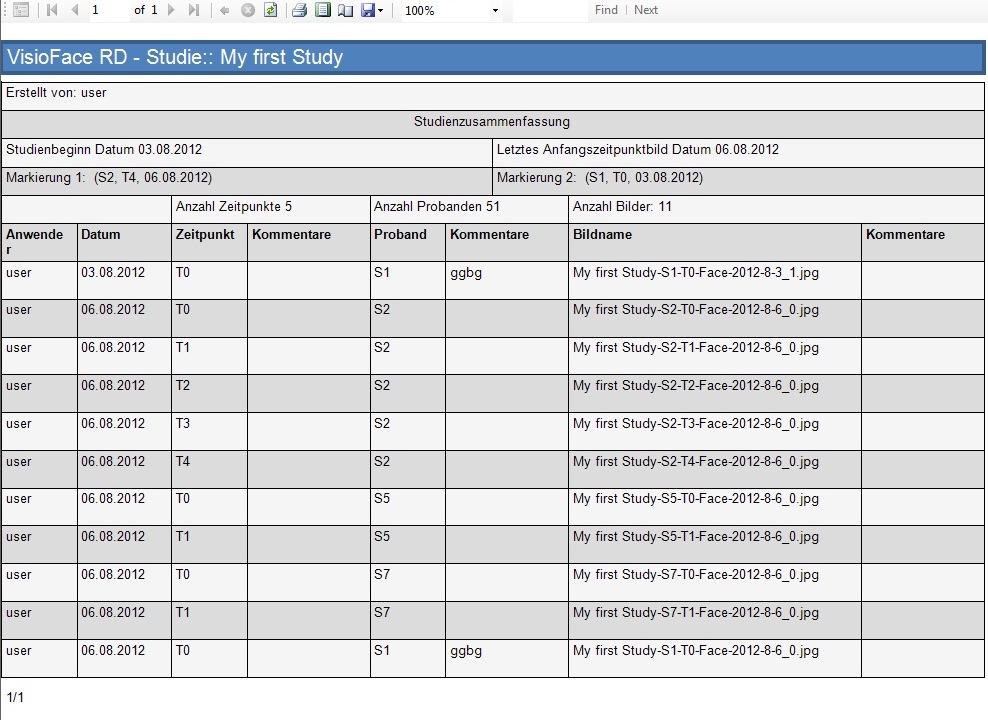Tewameter® TM Hex (E)
Tewameter® TM Hex
Ultimate Measurement of Transepidermal Water Loss and Beyond
The Tewameter® TM Hex (successor of the world-wide popular Tewameter® TM 300) assesses the Transepidermal Water Loss (TEWL), indispensable parameter for the evaluation of the water barrier function of the skin, with a revolutionary accuracy and reproducibility. 30 sensors inside the probe “see” the relative humidity and temperature like a camera. The high amount of data allows the user not only to highly accurately measure inside the probe but can show results also for the areas right outside the probe, namely skin surface and ambience above the probe. Thus, new, exciting parameters (e.g. local skin energy balance and others) may give interesting insights in several research fields. The inventions regarding the Tewameter® TM Hex are patent pending.Please watch a video on the revolutionary Tewameter® TM Hex to get an overview of its new features (just click on the image to start).
Water is constantly evaporating from the skin which is part of the important body’s metabolism. The amount of water (Transepidermal Water Loss – TEWL) is expressed in g/h/m². As soon as the barrier function of the skin however is slightly damaged, the water loss will increase (even with smallest damages invisible to the human eye). Its measurement is an indispensable parameter for the evaluation of the water barrier function of the skin and a basic measurement in all kind of applications for topical applied products. The C+K Tewameter® has always been working based on the “open chamber” measurement, a method which is acknowledged as the best way to asses this parameter*. *E. Berardesca, M. Loden, J. Serup, P. Masson, L. Monteiro Rodrigues, The revised EEMCO guidance for the in vivo measurement of water in the skin, Skin Research Technology, 2018; 24: p. 351-358 The “open chamber” measurement method is the only method to assess the TEWL continuously without influencing its micro environment. Inside the probe of the Tewameter® in a hollow cylinder, there are sensors to measure relative humidity and temperature. The Tewameter® probe measures the density gradient of the water evaporation from the skin Δc which is proportional to the TEWL. Where the predecessor model, the Tewameter® TM 300 had two pairs of sensor (for relative humidity and temperature) inside, the new Tewameter® TM Hex features thirty pairs of sensors which gives 15 x the information from before. The sensors are arranged in 6 columns with 5 sensor pairs each. The name Hex acknowledges this fact, it is the Greek word for “Six”: „ἕξ“.
With this high amount of data for each single measurement and most modern electronics, the probe acts like a camera which “sees” the temperature and humidity distribution, thus giving extremely accurate, reproductive and quick results. Within seconds a robust TEWL value is measured with very low variation & measurement uncertainty.Please watch a video on the revolutionary Tewameter® TM Hex. Measurement uncertainty (Accuracy) For the Tewameter® TM Hex for the time the measurement uncertainty (in g/h/m²) is recorded with each measurement value. This is a unique accuracy feature for a skin measurement tool and it is directly displayed with the robust TEWL in the table. When you zoom into the TEWL curve, the measurement uncertainty for the whole curve becomes visible as a grey band around the measurement graph. In addition, through this high data volume, we do not only have knowledge about what is measured inside the probe but can calculate results also for the areas right outside probe, namely skin surface and ambience above the probe. Thus, the calculation of new, exciting parameters is possible which may give interesting insights in several research fields.Local Skin Energy Balance Skin is constantly emitting energy (heat) in two ways: through diffusion of warmed air molecules on top of the skin and through evaporation cooling. For the first time these two can be recorded during a TEWL measurement and displayed separately and in total. The measured values are expressed in W/m². The result ranges from a few W/m² for skin sites like the inner forearm up to 100 W/m² and more for areas as palms of the hands, for example. The largest portion of the heat loss is coming from evaporation cooling. Humans under normal conditions have a basal metabolic rate of approx. 30 to 90 W and a body surface of approx. 2 m². Therefore the average total heat loss is approx. 15-45 W/m², depending on conditions and measured skin site it can be lower or higher. The local skin energy balance could be an exciting new parameter for different research fields: e.g. sports, nutrition & food supplements, textile, micro circulation, sleep medicine, special cooling products, etc. Water vapor concentration cH20 Skin & Ambience This parameter expresses the absolute humidity in g/m³. The difference between the value measured on the skin and in the ambience is the drive, the motor for the TEWL. In addition this parameter gives more details about the measurement conditions (e.g. atmospheric turbulences). In addition also temperature and relative humidity (RH) of the skin surface and in the ambience on top of the probe are measured.
“Open Chamber” Measurement of the TEWL without any influences of the micro climate of the skin (pressure, occlusion, temperature). No waiting time between the measurements. With the “open chamber” method of the Tewameter® TM Hex even high water loss values can be detected accurately as no water is collected inside the probe. Traceable, sophisticated calibration of humidity, temperature and TEWL to g/h/m2. Worldwide most used TEWL measurement method (even approved in space!*). Several hundreds of performed studies with the Tewameter® prove this fact. Tewameter® TM Hex Extremely accurate, quick and robust measurement of the TEWL with the information of 30 sensor pairs. A very stable measurement is achieved quickly within 20 seconds; continuous measurements over longer periods are also possible depending on the application. Due to the high amount of measurement data, the probe can “see” the values like a camera. Unobstructed view to the measurement surface and unobstructed evaporation flow. Robust sensor placement in the wall inside the measurement head. Due to the high amount of collected data measurements not only inside the probe but also on top and below the probe (ambience and skin surface). Exciting new parameters beyond TEWL: e.g. skin temperature, water vapor concentration and local skin energy balance in W/m divided into evaporation cooling and heat diffusion. Sophisticated offset function to check the probe and compensate its “aging effects”. First probe with documented, extremely low measurement uncertainty visible for each single measurement value. Perfect placing on the skin is possible. The arrow on the probe head shows the direction of diffusion. A message in the software appears if the probe is put on upside down. Hygienic rings (disposable) Last not least, it is part of the software MPA CTplus with its many advantages and exciting new features. Unique accessory: the Ambient Condition Sensor RHT 400, records in addition to room temperature and relative humidity also the local air pressure. When measuring TEWL with the Tewameter® TM Hex, the local air pressure is included in the measurement value calculation, making it even more accurate and enables interesting study approaches in special situations (e.g. in high altitude, extreme weather conditions, etc.). The Tewameter® TM Hex is the first of a new probe generation of C+K and is supported by the sophisticated software MPA CTplus. Stay tuned! Other probes will follow soon.
The measurement of the TEWL and the quality of the barrier function of the skin is the basic measurement for all cosmetic applications. Indispensable instrument for formulation, claim support and efficacy & safety testing of skin care, household product, raw materials and pharmaceutical products. Typical claims (example) with the Tewameter®: barrier improvement, regenerating, protecting, for sensitive skin, calming/soothing, vitalizing, non-occluding, tolerable, anti-irritation, anti-pollution, etc. Sweat studies (antiperspirant efficacy) Patch Tests Standard in dermatological basic research on humans and animals. In occupational health the measurement of the skin barrier function can show the necessity of using skin protection products. Other industries, e.g. textile-, nutrition, packaging, paper/tissue are using this measurement. Local skin energy balance could be an exciting new parameter for different research fields: e.g. sports, nutrition & food supplements, textile, micro circulation, sleep medicine, special cooling products, etc.
The Tewameter® TM Hex is the first probe out of a new C+K probe generation. Probe only:Dimensions: Measuring Chamber: Height: 2 cm, Ø 1 cm, Probe: Length: 17 cm, Cable length: approx. 1.3 m, Weight: 75 g (including cable), Measurement principle: “open chamber” measurement of evaporation gradient by 30 sensor pairs inside for temperature and RH Measurement repeatability (confidence interval 99 %): TEWL: ± (0.15 g/h/m² + 1.0 %)Measurement uncertainty (max.): TEWL: ± (0.5 g/h/m² + 5.0 %)Operating conditions: T: 10-40° C, RH: 30-70 % RH The probe is not available as a wireless probe. If required, it will be supplied with Tewameter® TM 300 technology. The Tewameter® TM Hex MDD (Multi Display Device) has to be connected to the PC sofwtare for check calibration & zero offset. The technical data are preliminary and changes may be made without prior notice.Other related probes available Tewameter® Triple TM 330T: TEWL measurement probe with three flexible measurement heads to measure either on a large surface or on three different surfaces simultaneously. Tewameter® TM Nano: ideal tool for small or difficult to reach skin sites (e.g. nail, lips, scalp with hair). In vitro measurements with the Tewameter®-Family Tewitro® TW 24: only device to measure the water evaporation from cultured tissue sets (wells in a plate with medium) in up to 24 wells simultaneously with the worldwide most used open chamber measurement of the Tewameter®. Indispensable tool for safety, sensitivity and efficacy measurements to avoid using animals or volunteers. The convenient and organized software offers 24 TEWL-values (one for each measurement inlet), with two different adjustable averages and their respective standard deviations. A graphical view for each measurement inlet is available with one click.
Invitro Tewameter® VT 310: probe to offers all benefits of the Tewameter® and is perfectly suited to sit on a Franz cell. It emulates completely the upper part (donor chamber) of a Franz cell (standard is 15 mm Ø, other sizes on request).Thus the probes sits exactly on the membrane of the Franz cell as it would sit on skin directly without needing further adapters. The measured TEWL-value is expressed in g/h/m², the worldwide acknowledged absolute measuring value for skin. No other probe offers this possibility. If needed, the probe can also be used on a centerpiece of high quality Teflon, which fits exactly on the probe and the receptor chamber of the Franz cell without further fixing adapters. With a centerpiece, the measured TEWL has to be regarded relatively (no longer absolute figures as the distance between probe and membrane is changed). In vitro TEWL measurements have a variety of different applications: Inexpensive pre-screening before in vivo tests (no ethic commission, no expensive volunteers) Only way to study skin permeability and dermal absorption necessary for safety and efficacy testing In vitro tests are established in several worldwide acknowledged guidelines: e.g. ECVAM (European Centre for the Validation of Alternatives to Animal Testing) or OECD (Organisation for Economic Co-operation and Development)Download brochure
Literature
FAQ about Tewameter®


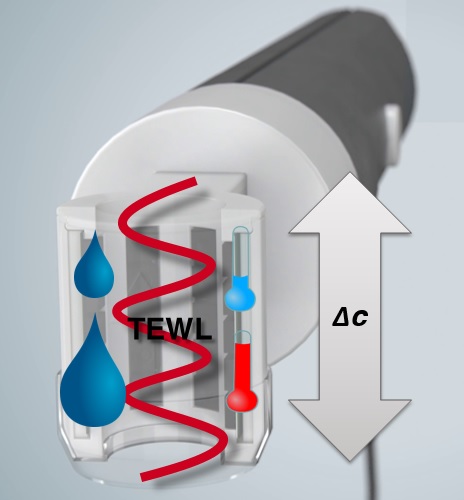
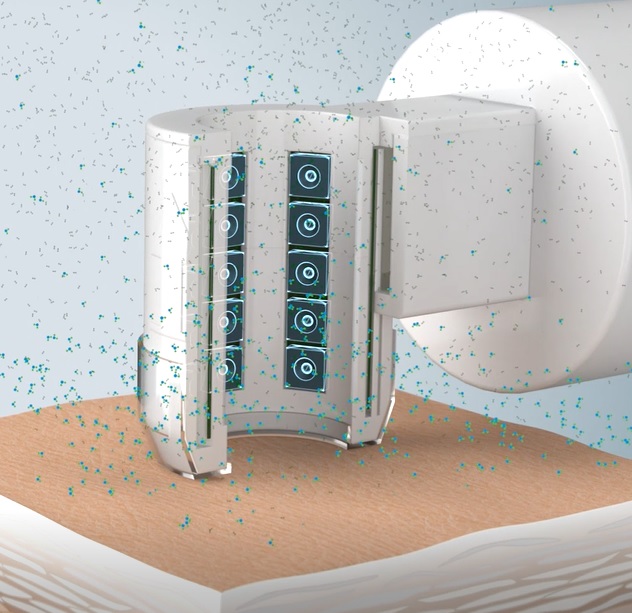

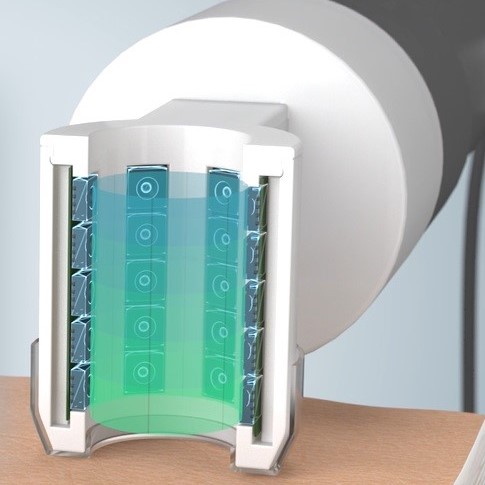
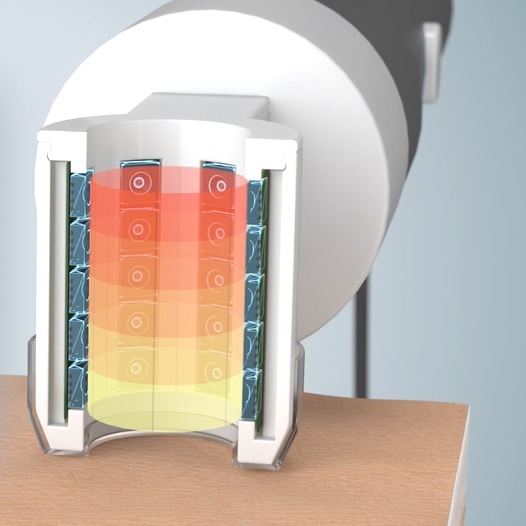
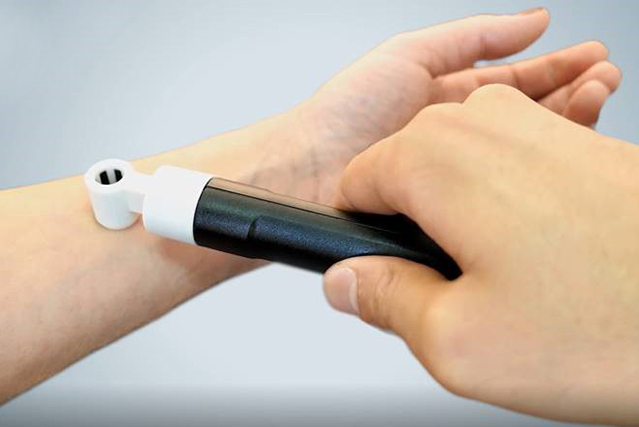
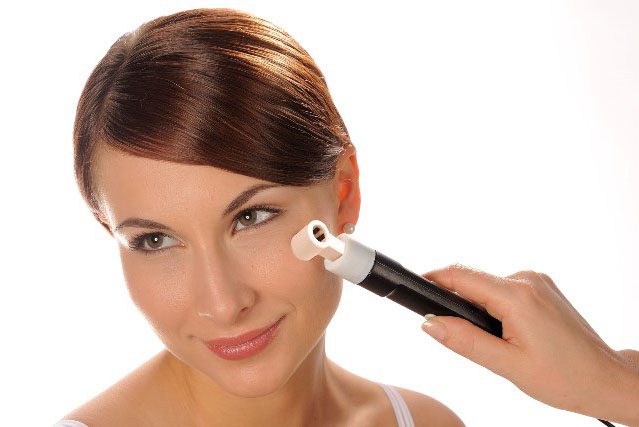
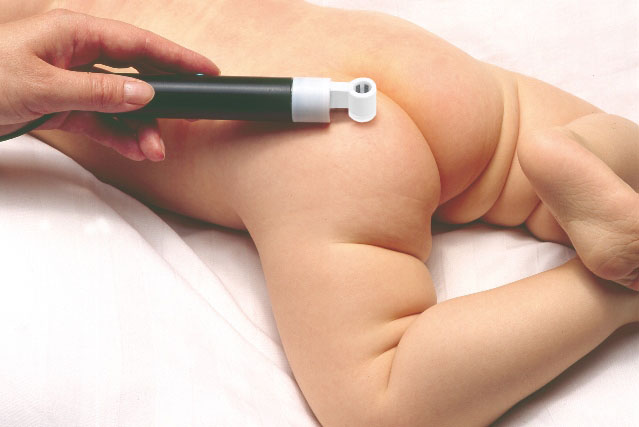
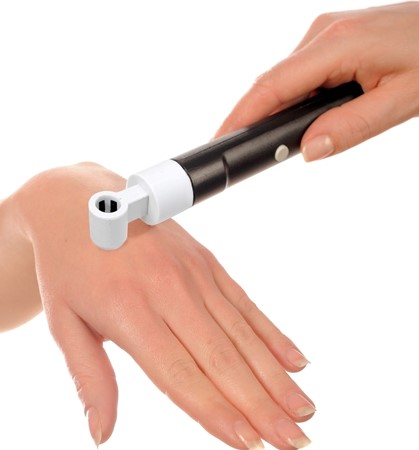

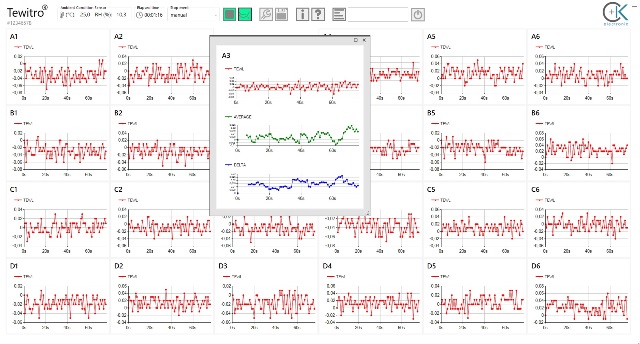
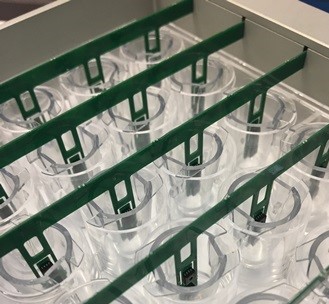
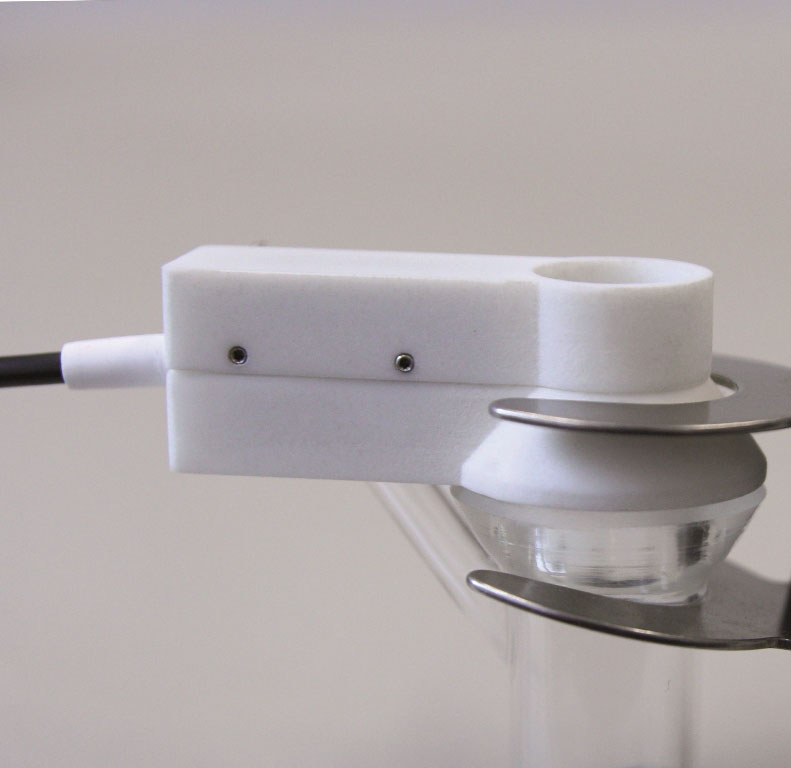
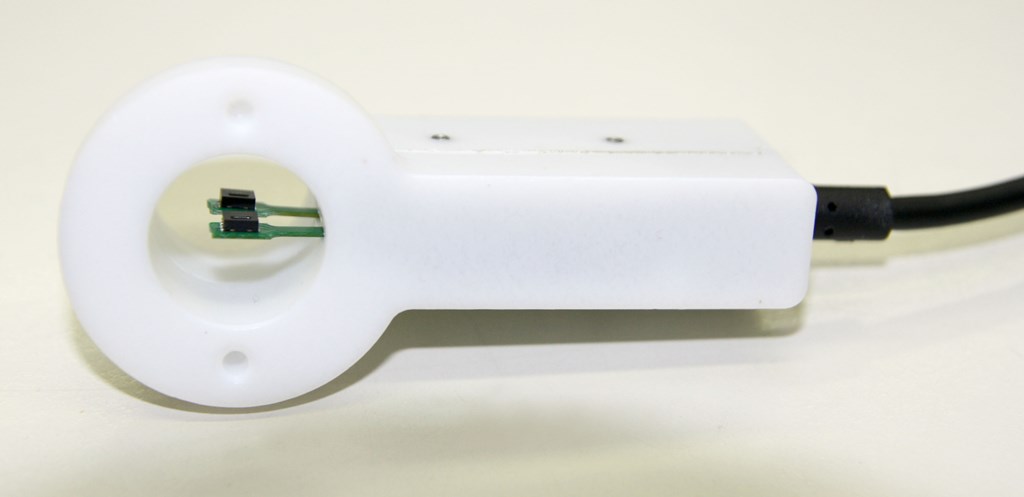
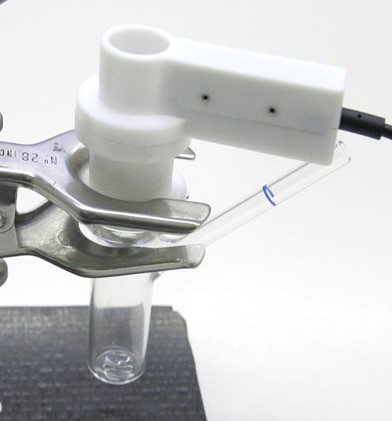
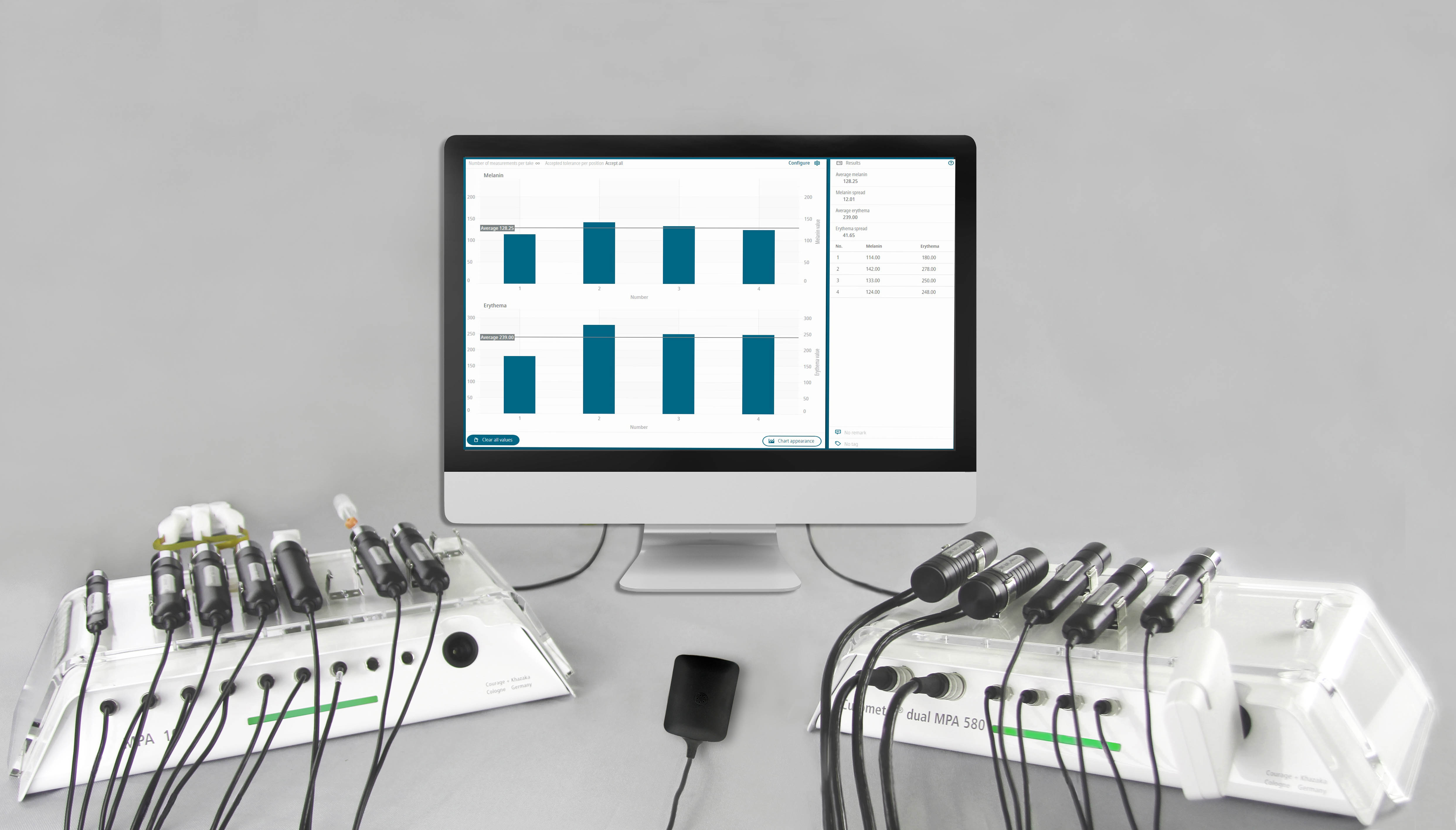

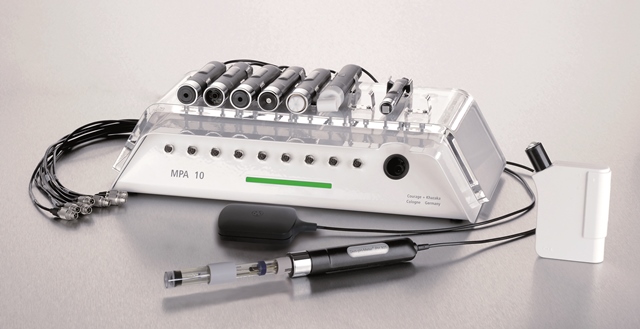
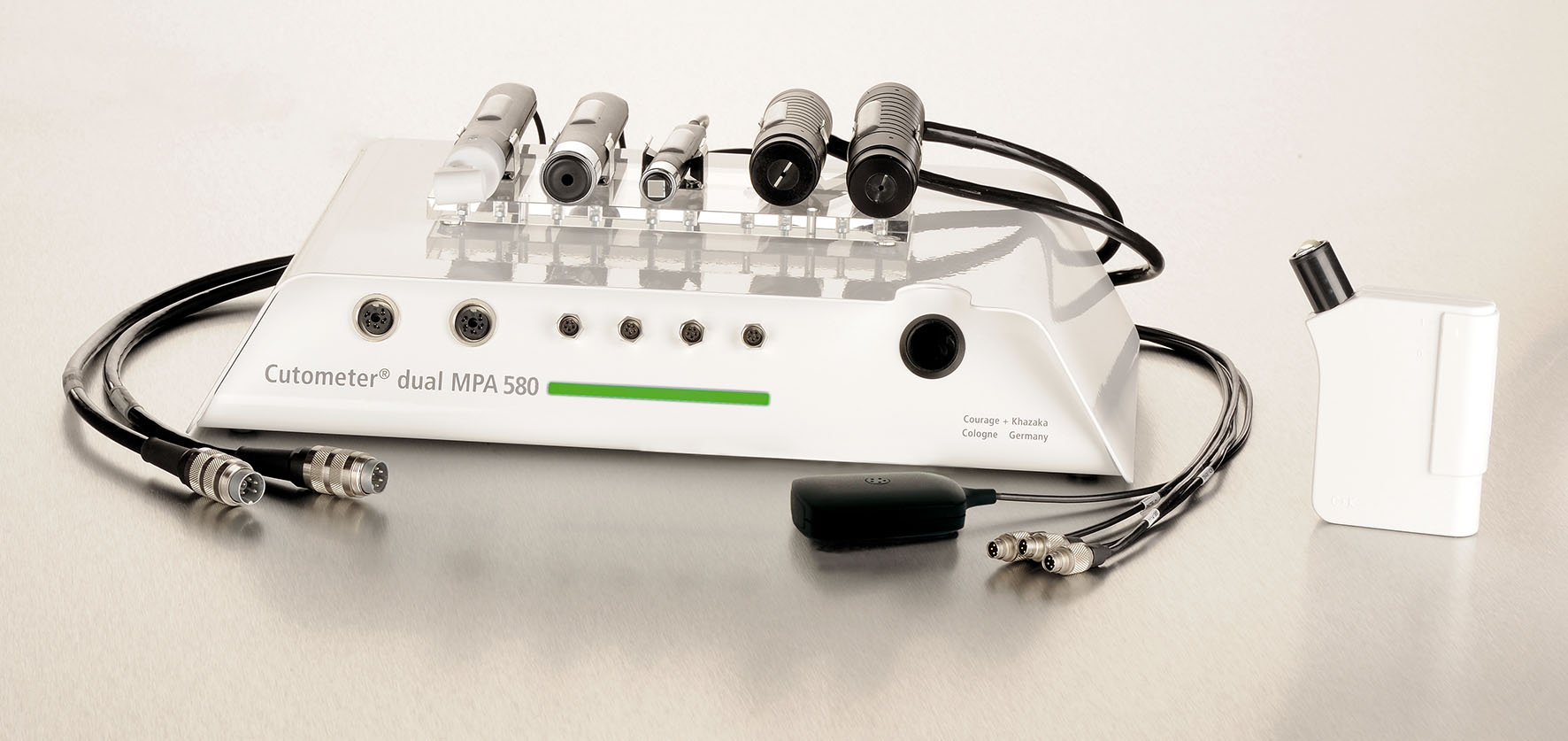
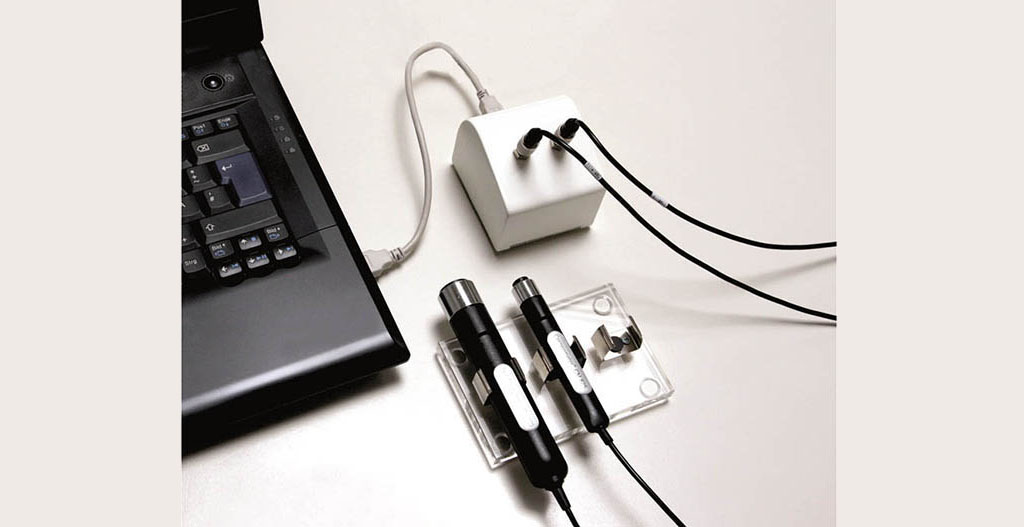
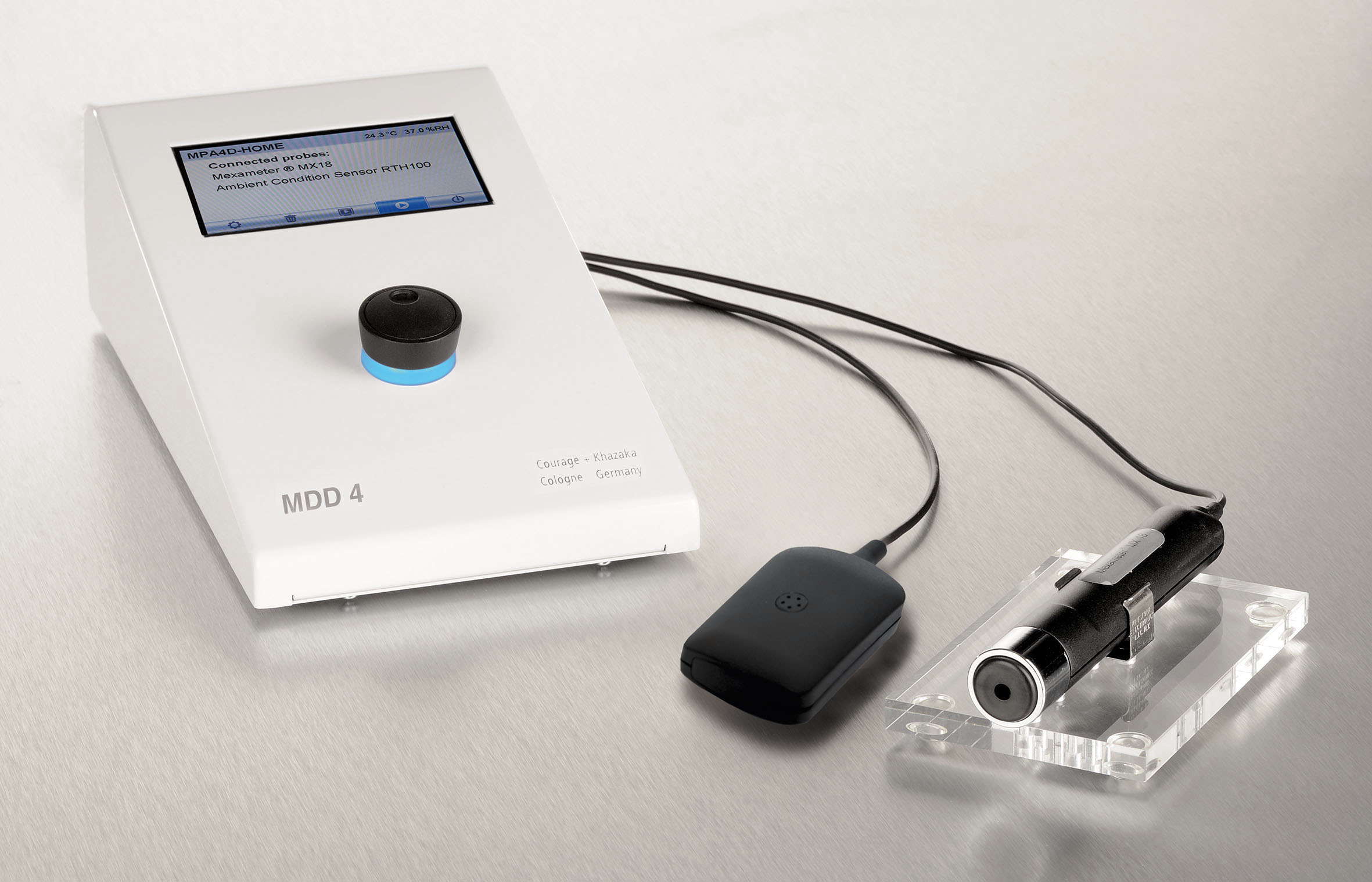
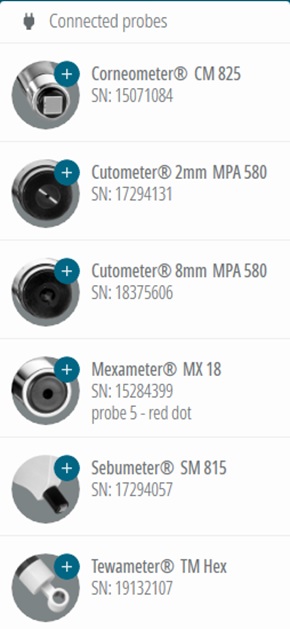 Convenient, intuitive, modern software, easy to navigate.
Convenient, intuitive, modern software, easy to navigate.